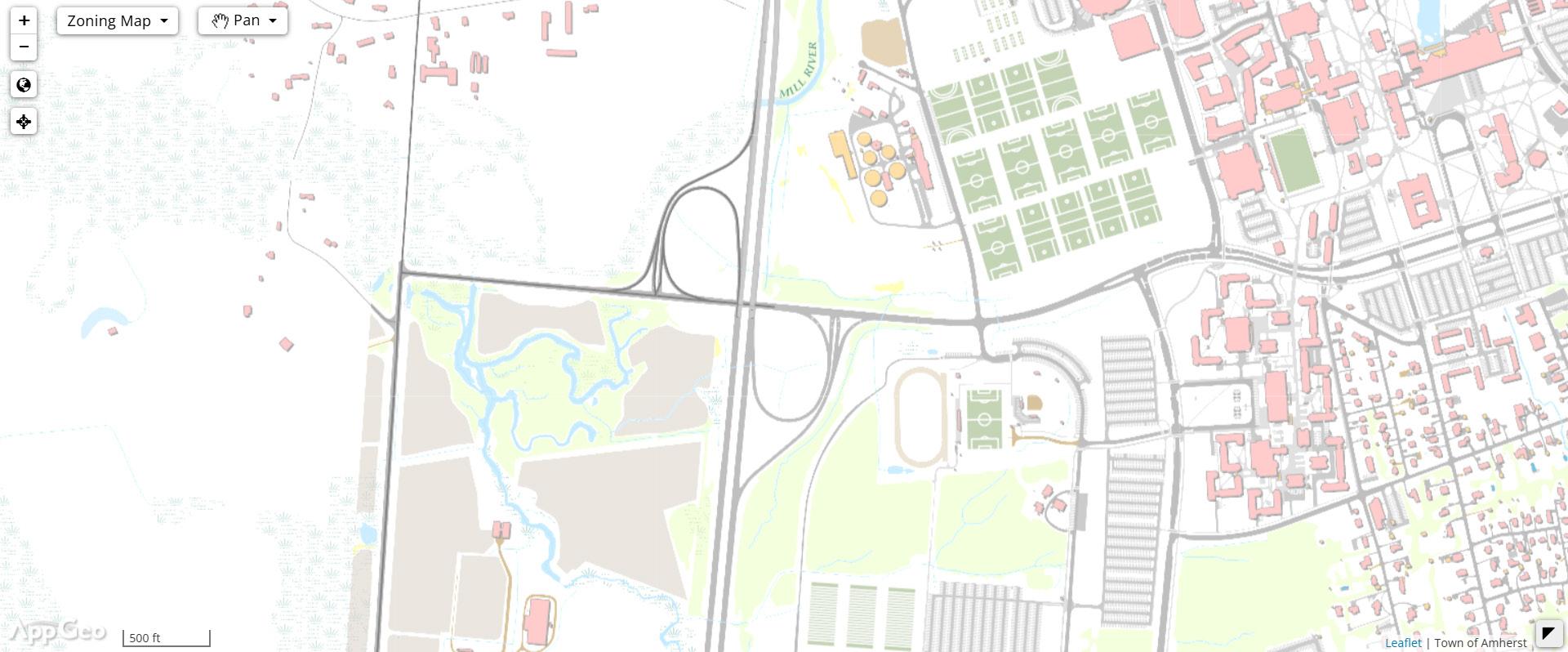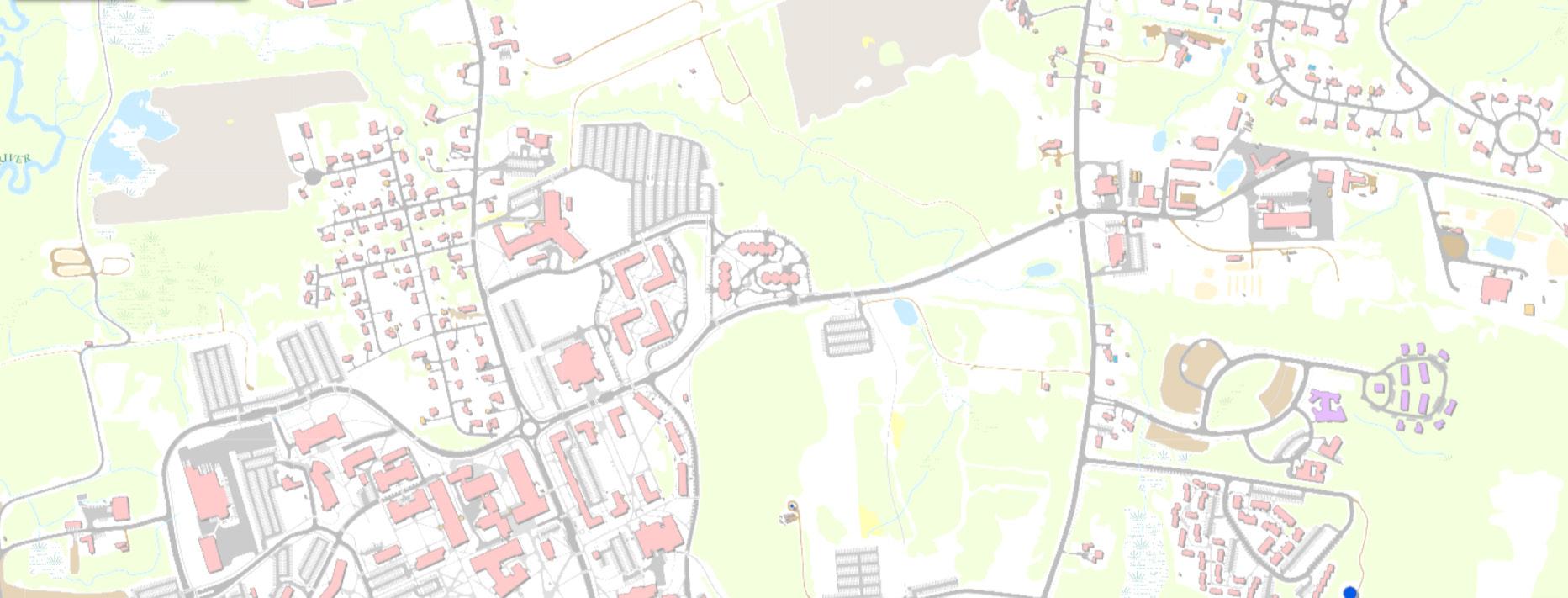
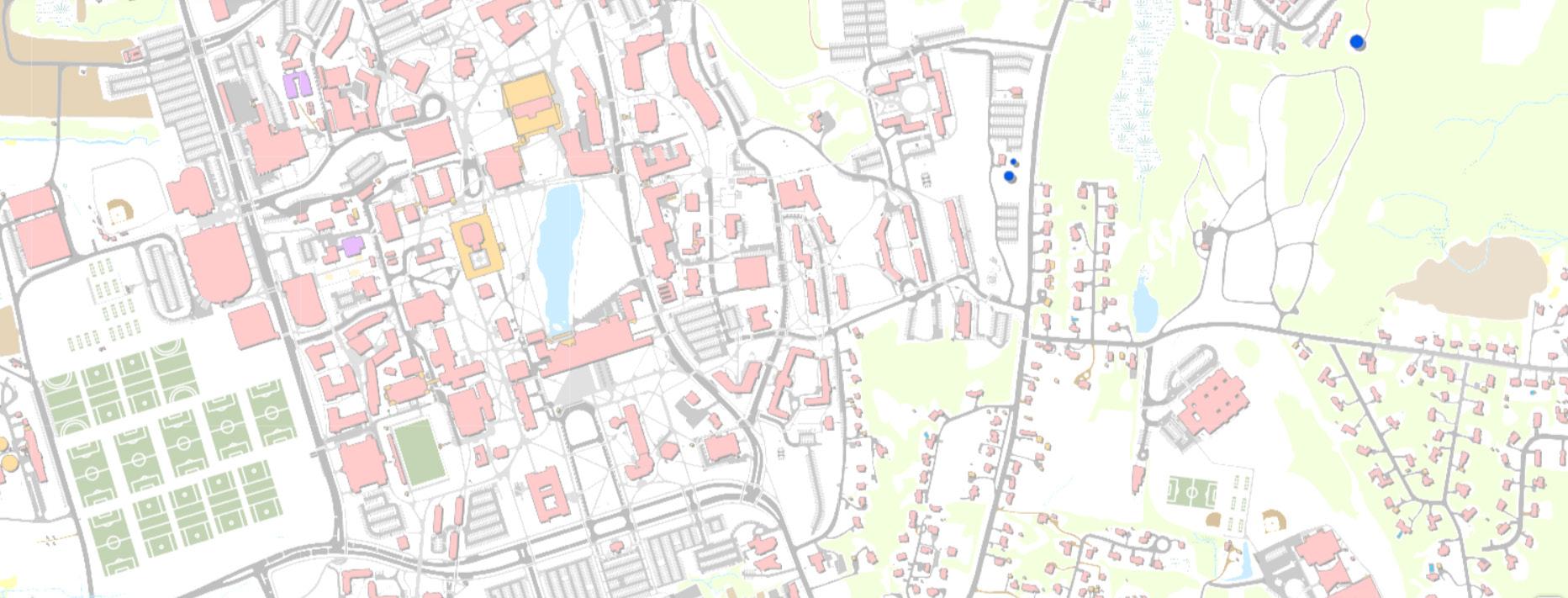
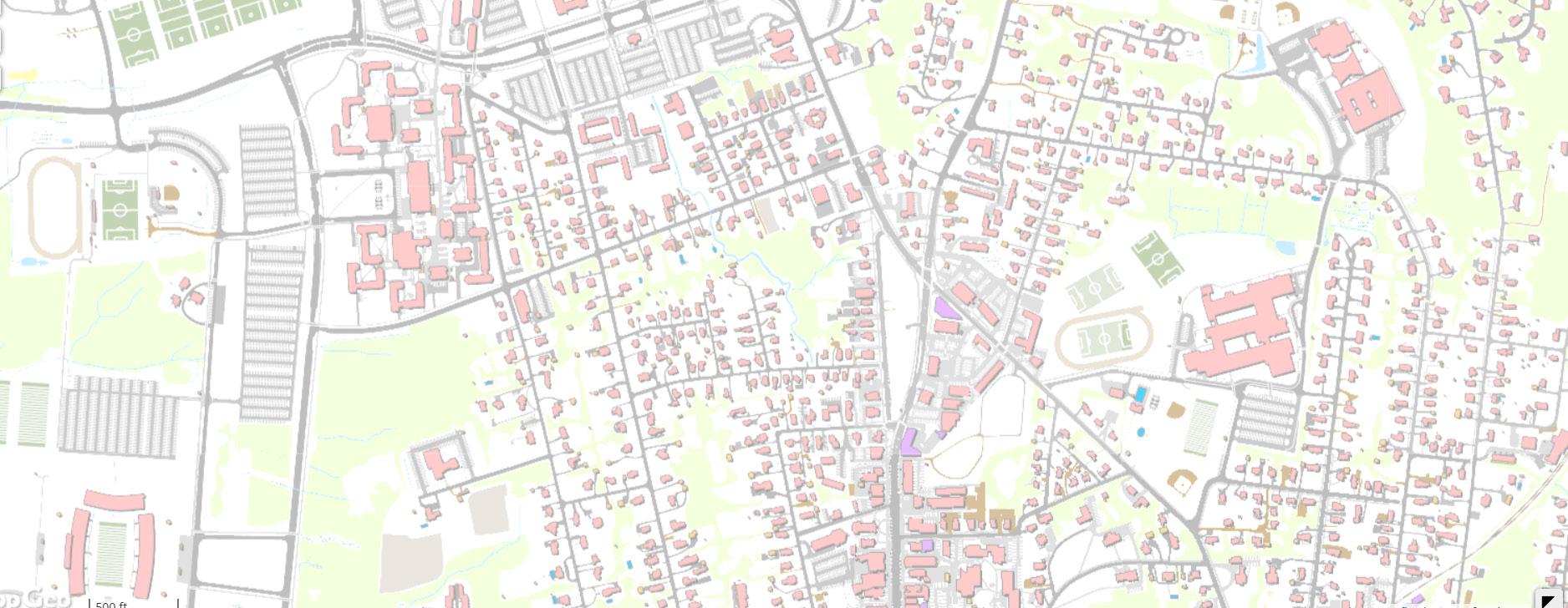





Angela Haddon
ahaddon03@gmail.com | (603) 722-5373
This portfolio brings together some of my proudest projects from my time studying architecture and shows how I’ve grown as a designer. It’s a glimpse into my creative process, technical skills, and what I hope to achieve in the field.
Architecture has been a passion of mine for as long as I can remember, fueled by a fascination with how spaces shape the way we live and connect. While studying at the University of Massachusetts Amherst, I’ve had the chance to dive into all kinds of architectural design—from big-picture concepts to hands-on material work.
In this portfolio, you’ll find projects that reflect the range of my skills and experiences. Highlights include modeling existing buildings to sharpen my BIM abilities and reimagining a historic structure on the UMass campus through an adaptive reuse project. These works also showcase my skills with tools like Revit and Rhino 7 and how I balance creativity with practicality.
This portfolio is more than just a collection of projects—it’s a snapshot of my journey and my dedication to always learning and exploring. Take a look, and feel free to share your thoughts. I’m always open to connecting, collaborating, and growing as a designer.
University of Massachusetts Amherst Amherst, MA
Bachelor of Science in Architecture May 2025
Minor in Building Conctruction Technology 2021-2025
Pinkerton Academy Derry, NH 2017-2021 2021
Godden Sudik Architects INC Centennial, CO
Architectural Intern June-August 2024
o Rendered schematic design site plans, floor plans, and elevations in Photoshop.
o Learned proper dimensioning and noting techniques in Revit and AutoCAD.
o Assisted with construction document file set-up.
o Assisted in redrawing plans in AutoCAD for specific projects needing updates.
o OSHA 10 Construction Safety
Revit, SketchUp, AutoCAD, Adobe Suite, Rhinoceros 7, Lumion
Model Making, Laser Cutting, Creative Thinking, Teamwork
o Best Graphic Presentation Describing Design Solution in AIA New Hampshire 2021 High School Design Competition
o National Technical Honor Society 2020-2021
The Farnsworth House in Plano, Connecticut, was designed by architect Ludwig Mies van der Rohe. This example of mid-century modern architecture is a museum that provides visitors with the experience of ‘less is more,’ thanks to its glass-and-steel structure and simple design that harmonizes with nature.
Being the first model I completed in Revit, this project expanded my knowledge of the program and boosted my confidence in using it, providing a framework that I am able to apply to future projects.





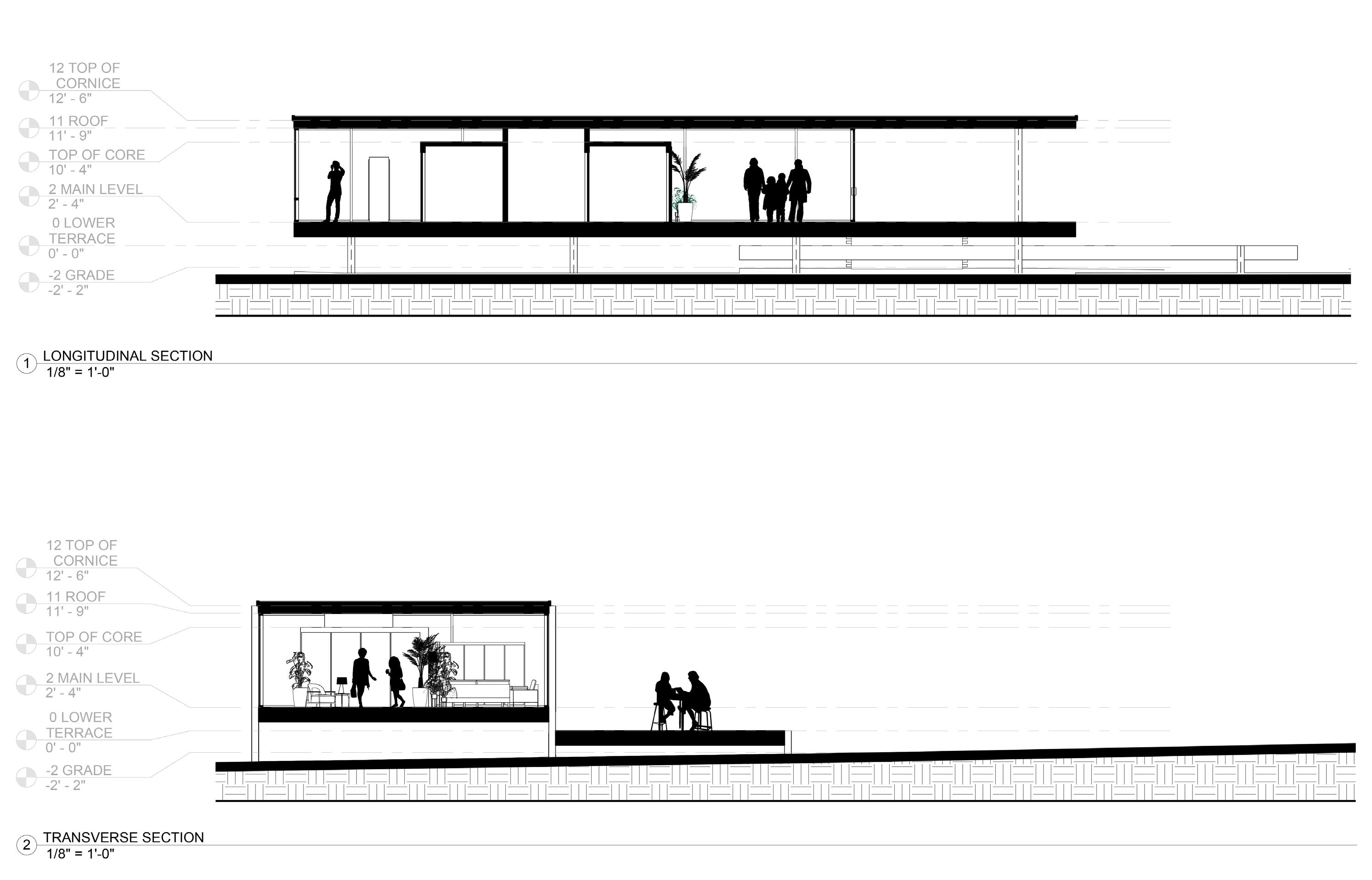

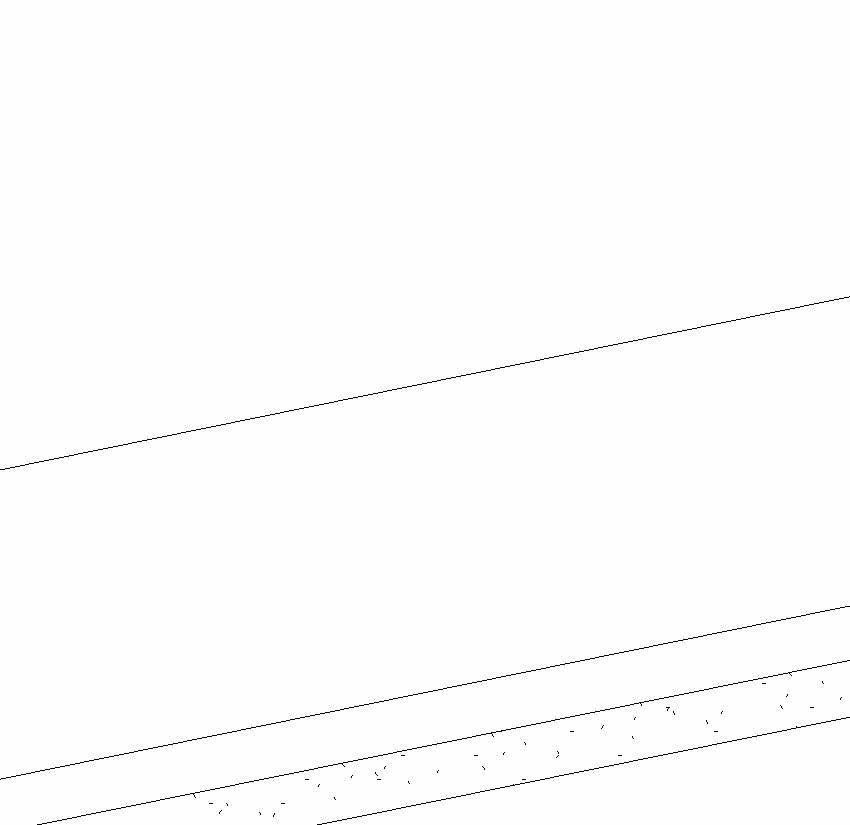
The Winthrop Library in Winthrop, Washington, designed by Johnston Architects is a noteworthy addition to the community. As a vital resource to the community, the library offers spaces for gathering, connection, and exploration for all ages.
Modeling this structure using Revit provided me with invaluable experience. I had the opportunity to practice creating detailed costruction documents and section details. This experience not only honed my skills but also provided a deeper understanding of modeling and represntation within Revit.

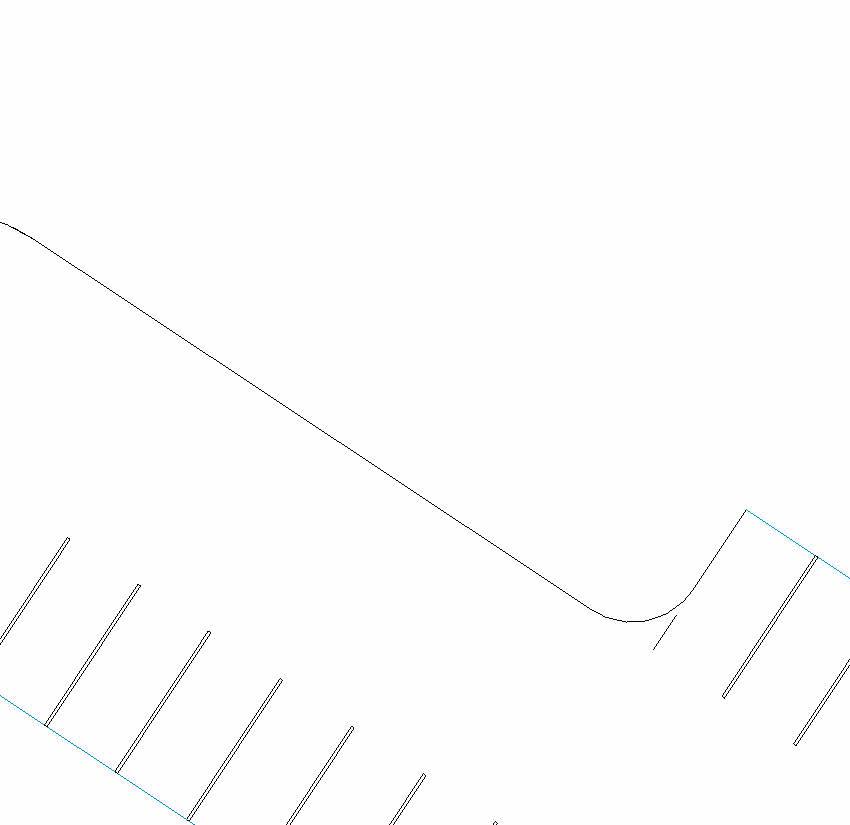


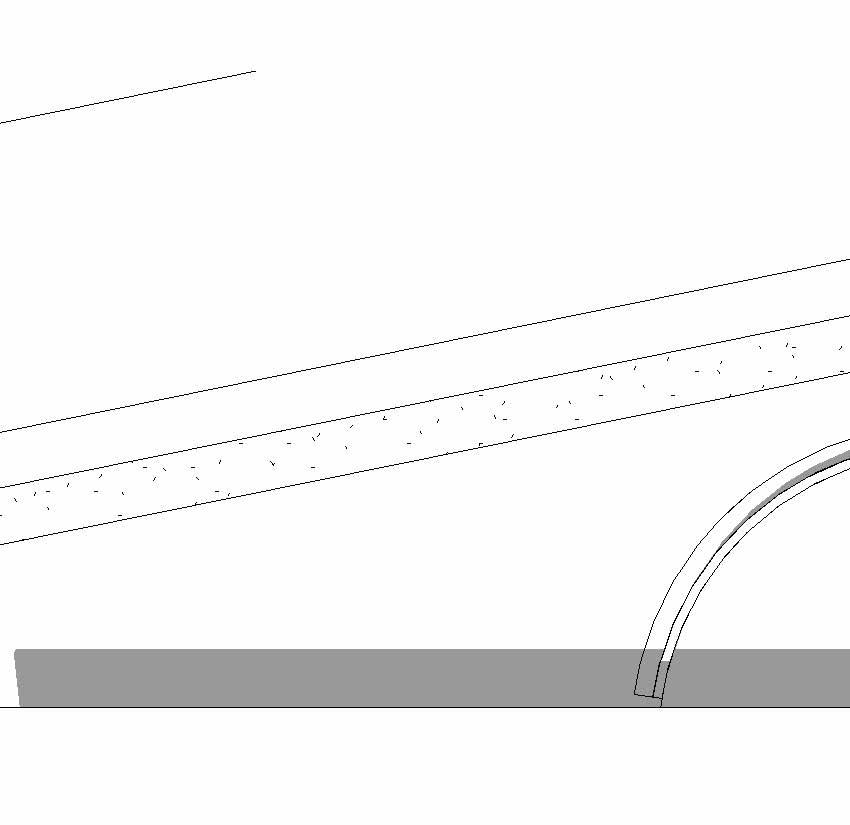
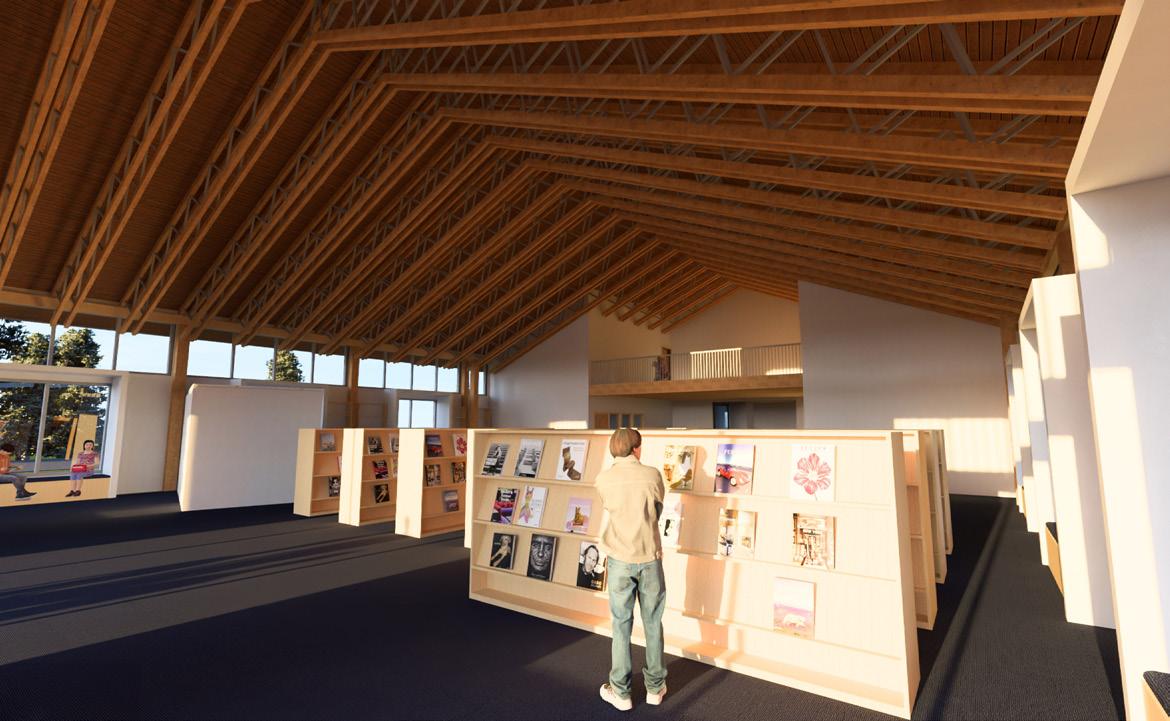
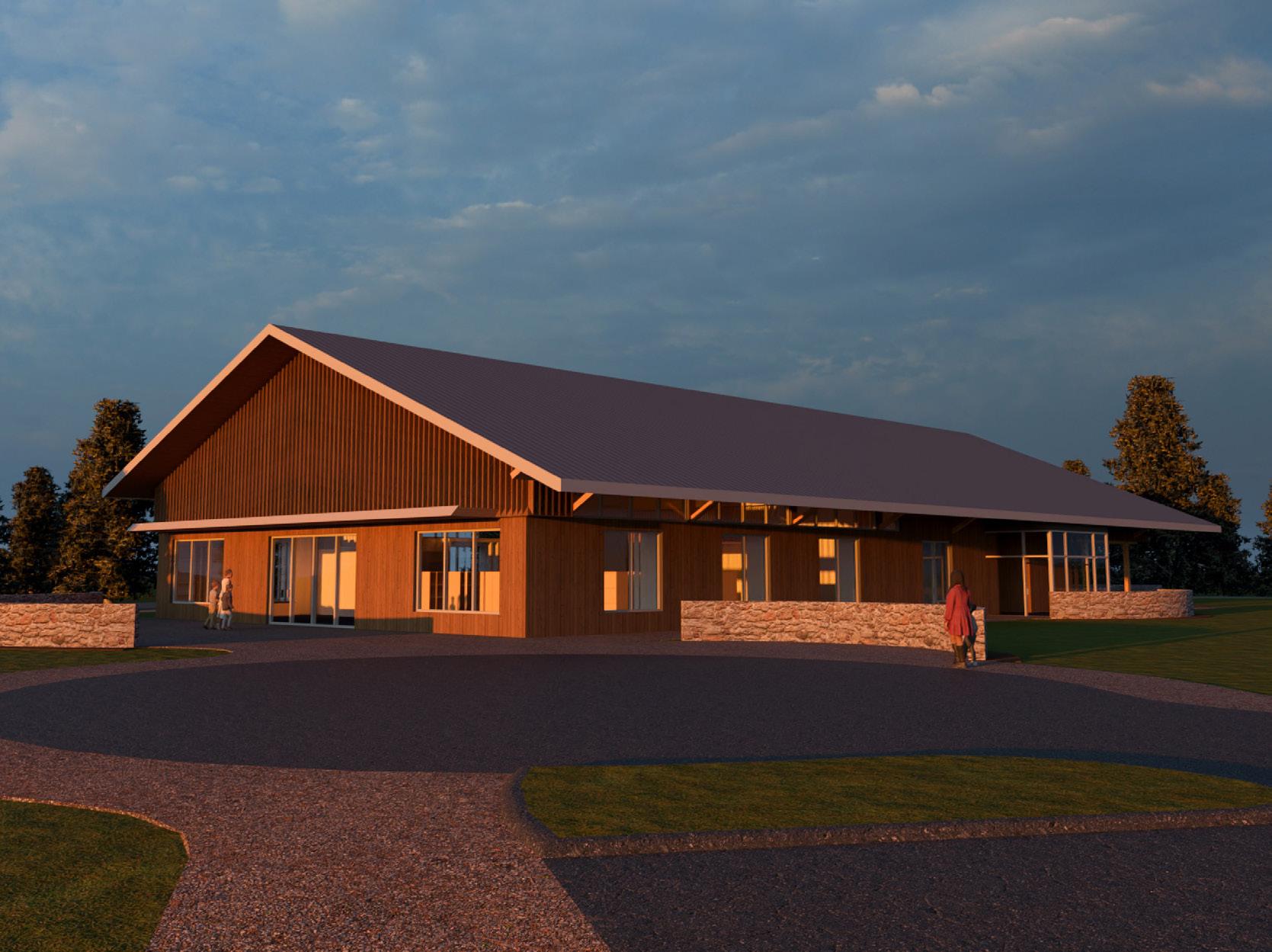
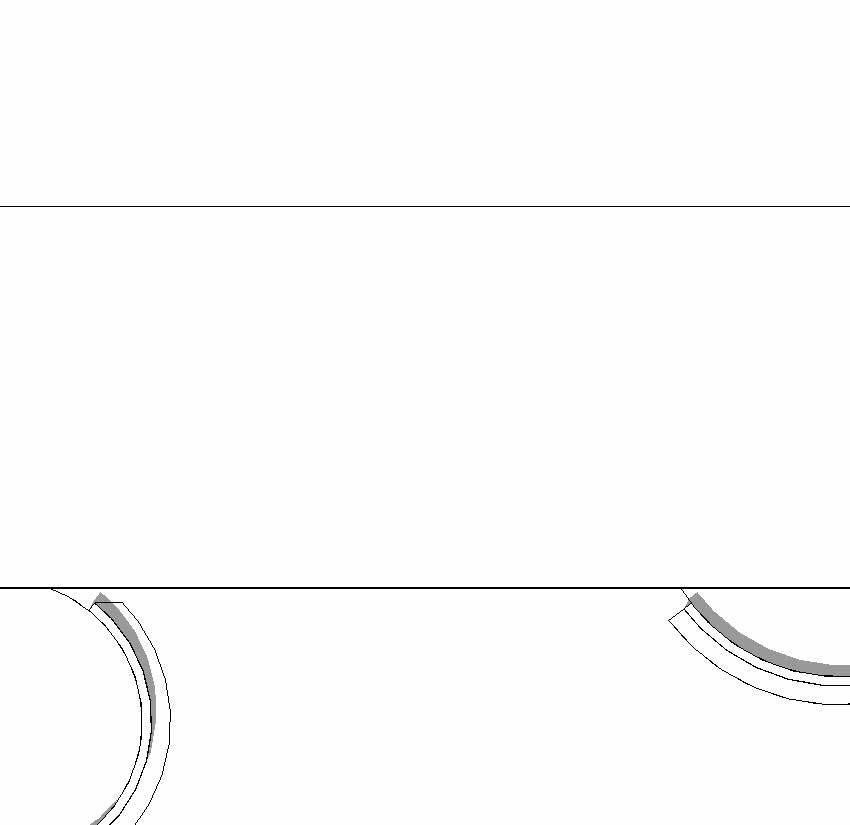


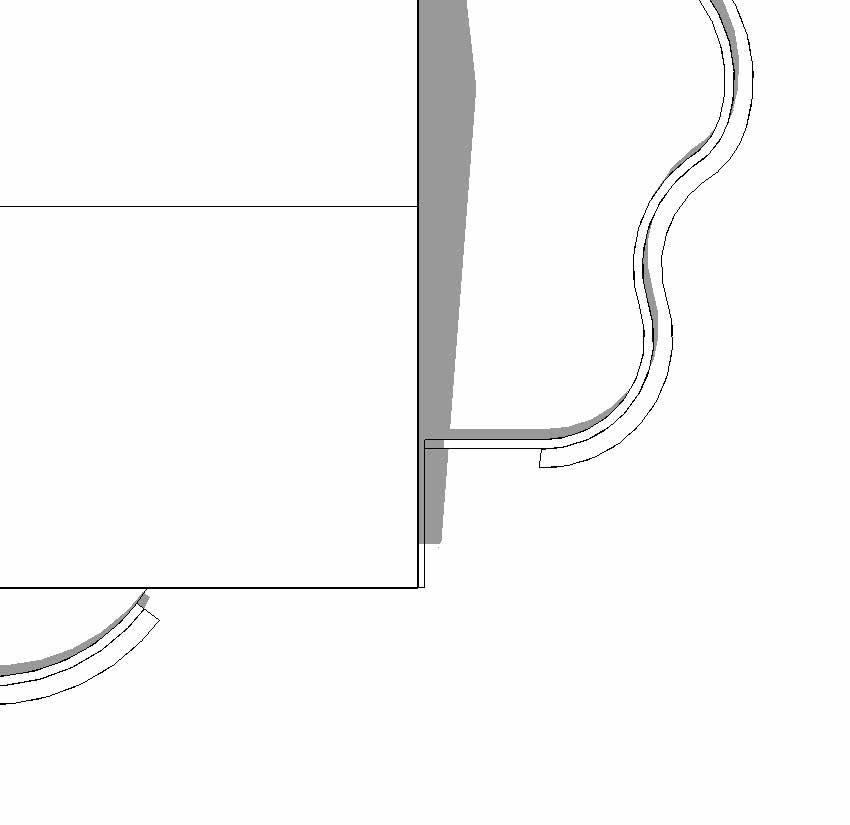


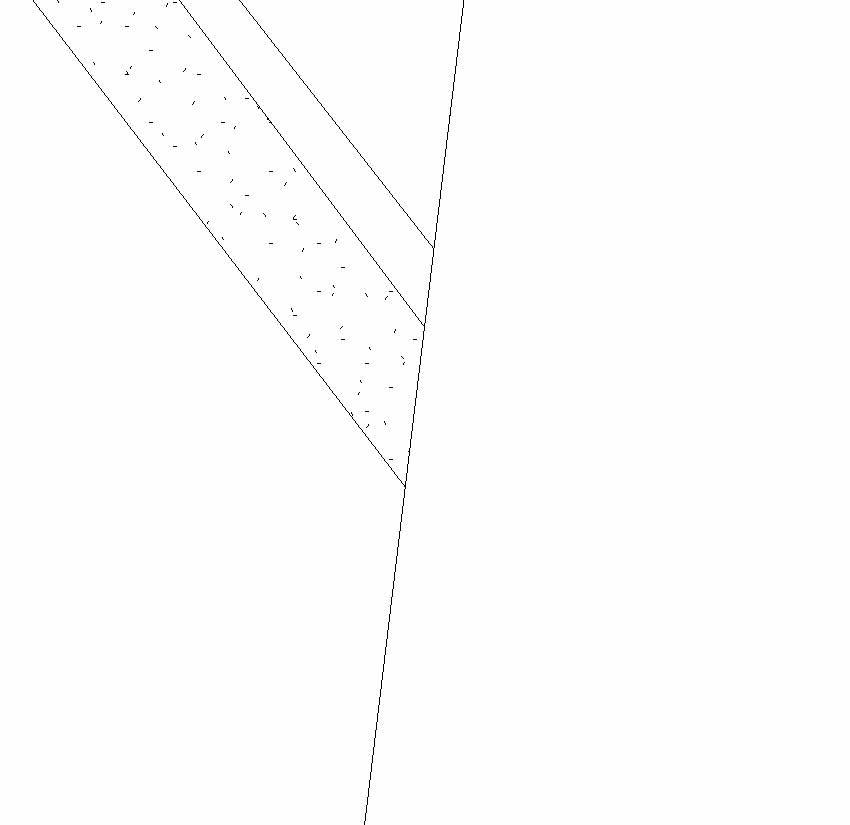










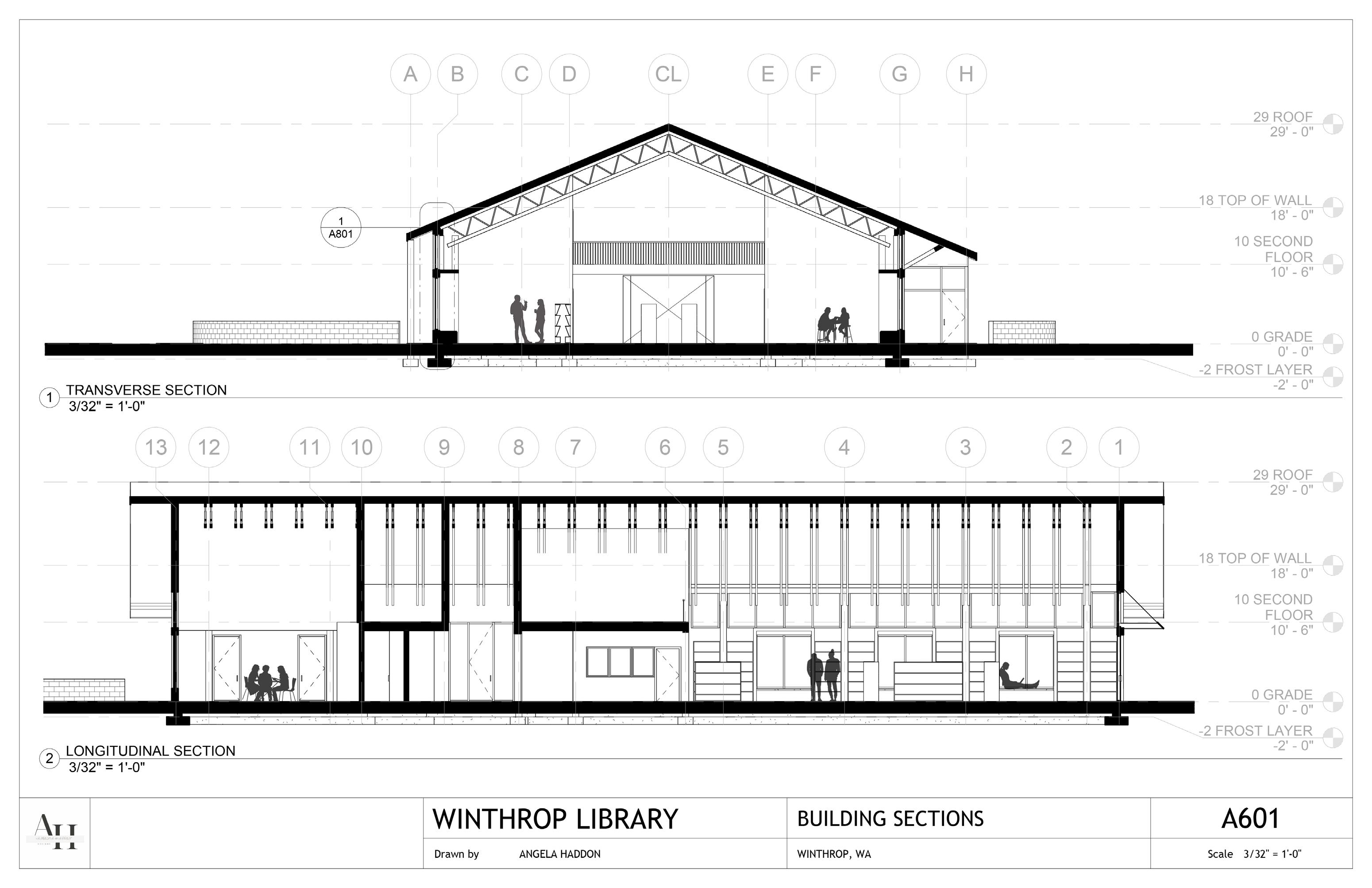
STANDING-SEAM ALUMINUM ROOF 1/4"
8 1/2" S.I.P. PANEL ROOF
ALUMINUM CURTAIN WALL SYSTEM
10 1/4" EXTERIOR WALL WOOD SIDING
ALUMNIMUM CURTAIN WALL SYSTEM 6" CAST-IN-PLACE CONCRETE S.O.G
STANDING SEAM ALUMINUM ROOF 1/4"
1/4" EPDM MEMBRANE
8 1/2" S.I.P. PANEL 3/4" PLYWOOD 7" POLYISOCYANTHE 3/4" PLYWOOD
5/8" WOOD SIDING
5/8" PLYWOOD SHEATHING
2" RIGID INSULATION
2.5" X 2.5" ALUM. MULLION
DBL. GLAZED CURTAIN PANEL 2X6 WALL STUD
MIN. 5% SLOPE 12" CONCRETE RETAINING WALL 3" INSULATED METAL PANEL 4" GRAVEL LAYER
2" RIGID INSULATION 9" CONCRETE SLAB
2" RIGID INSULATION
12" X 36" CONCRETE FOOTING
WALL SECTION DETAIL
This project consisted of taking an underutalized building, Hampden Commons, located in Southwest Residential Area at the University of Massachusetts Amherst, and turning it into a bustling student center to accommodate the roughly 5,700 students that live in the area.
The program of this renovation is heavily influenced by the new donation program implemented by the school called “New 2 U.” There is a small thrift shop currently in the building, but the new program wants to incorporate a larger store that has a separate drop off location and item cleaning area.
With this renovation, Southwest Residential will finally gain a much-needed educational space. Unlike other residential locations on campus, which either have renovated study spaces or are conveniently close to campus amenities, the highly populated southwest lacks such facilities. Hampden commons, being situated far from the main campus, necessitates a local study area for its residents, and this redesign provides just that.
This out of date and forgotten building has been given the opportunity to see a renovation that will fill it with life. This redesign brings nature indoors, with lots of green plants and colors inspired by nature, like greens, browns, and blues. It features a large garden box inside that captivates the attention of guests and makes the space feel alive and peaceful. This makeover not only makes it a beautiful place to visit but also a relaxing spot that helps people feel good. This transformation shows how smart design can bring new life to old spaces and create opportunities for people to enjoy and connect.

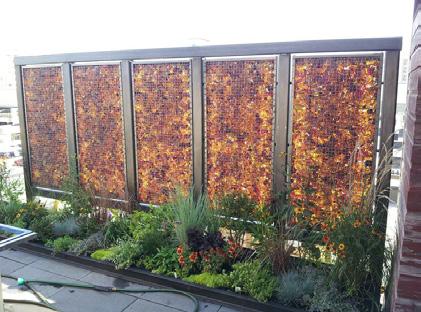
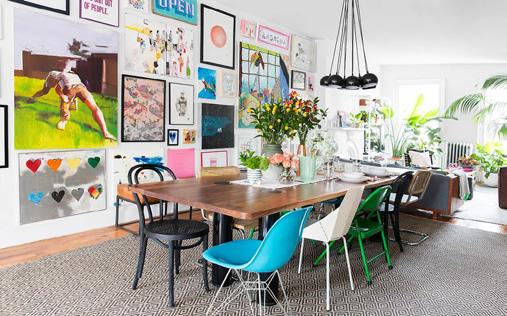
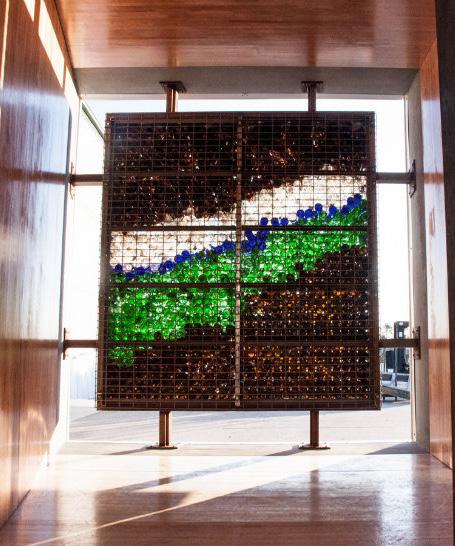
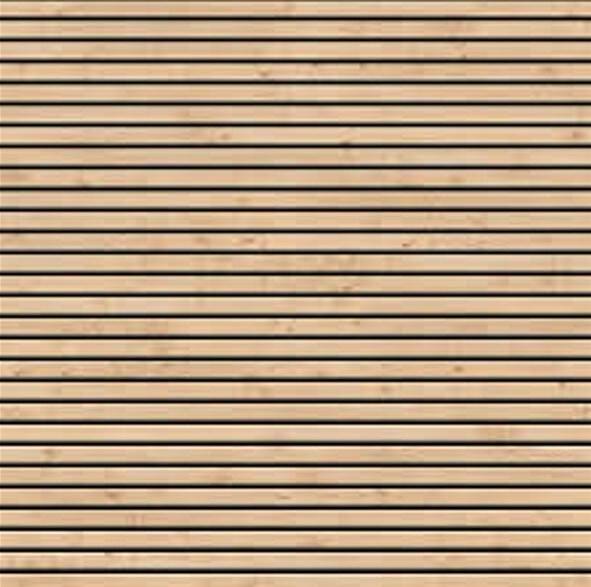









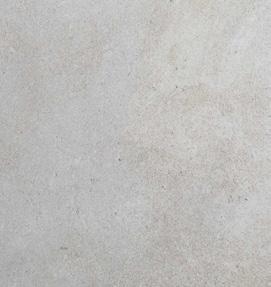

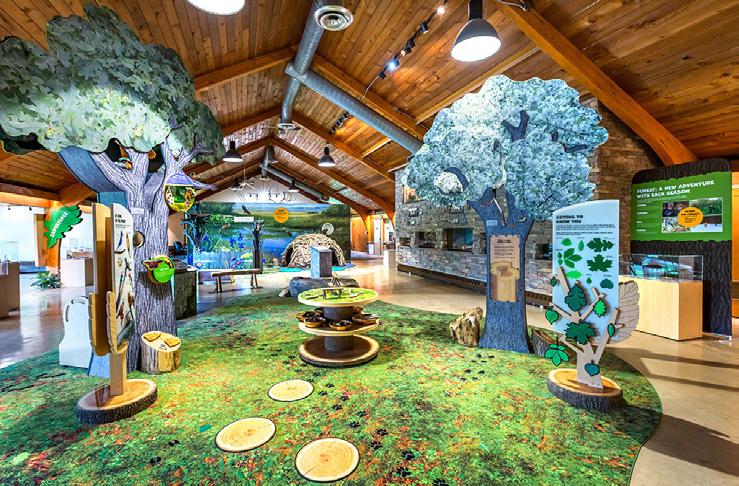





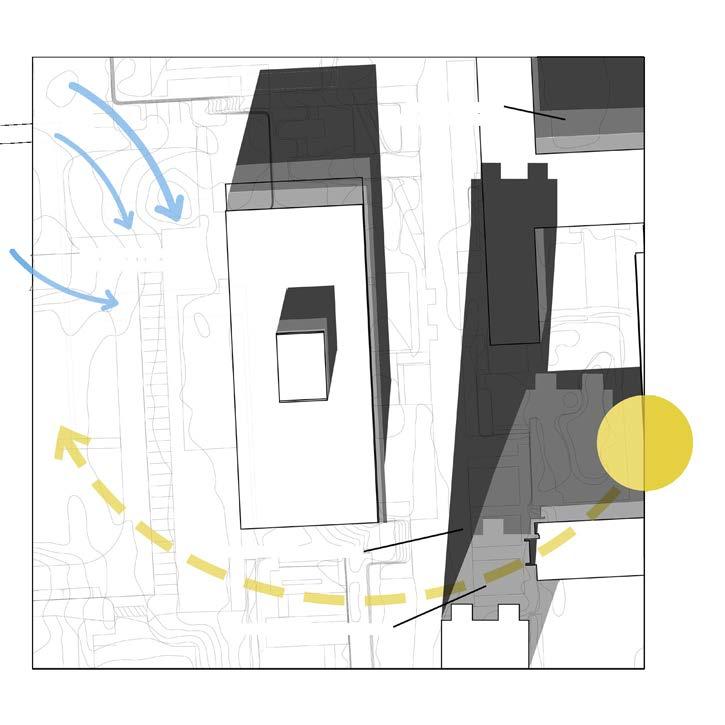









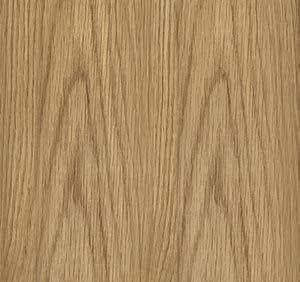


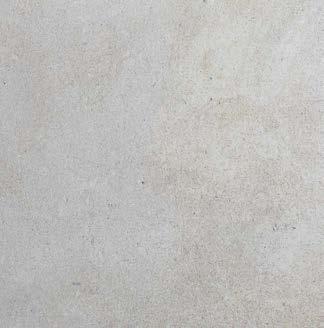

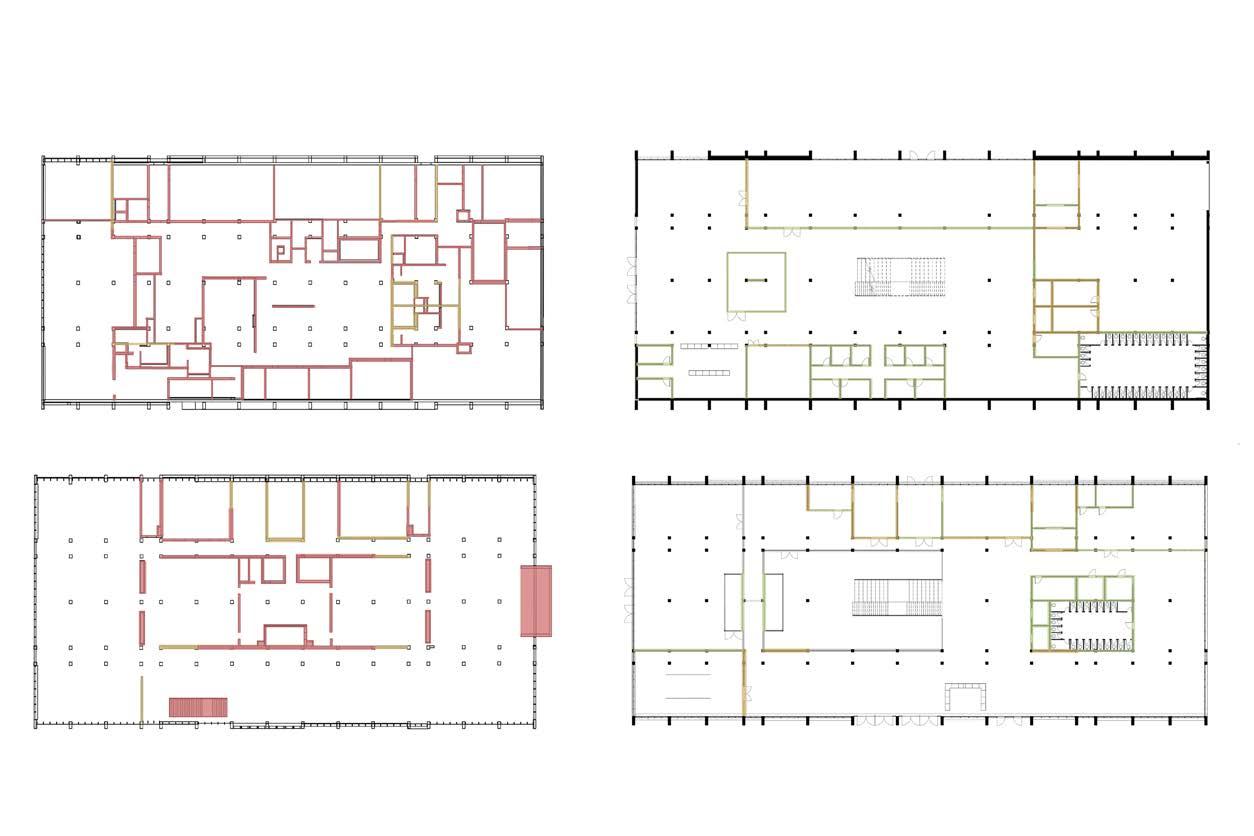
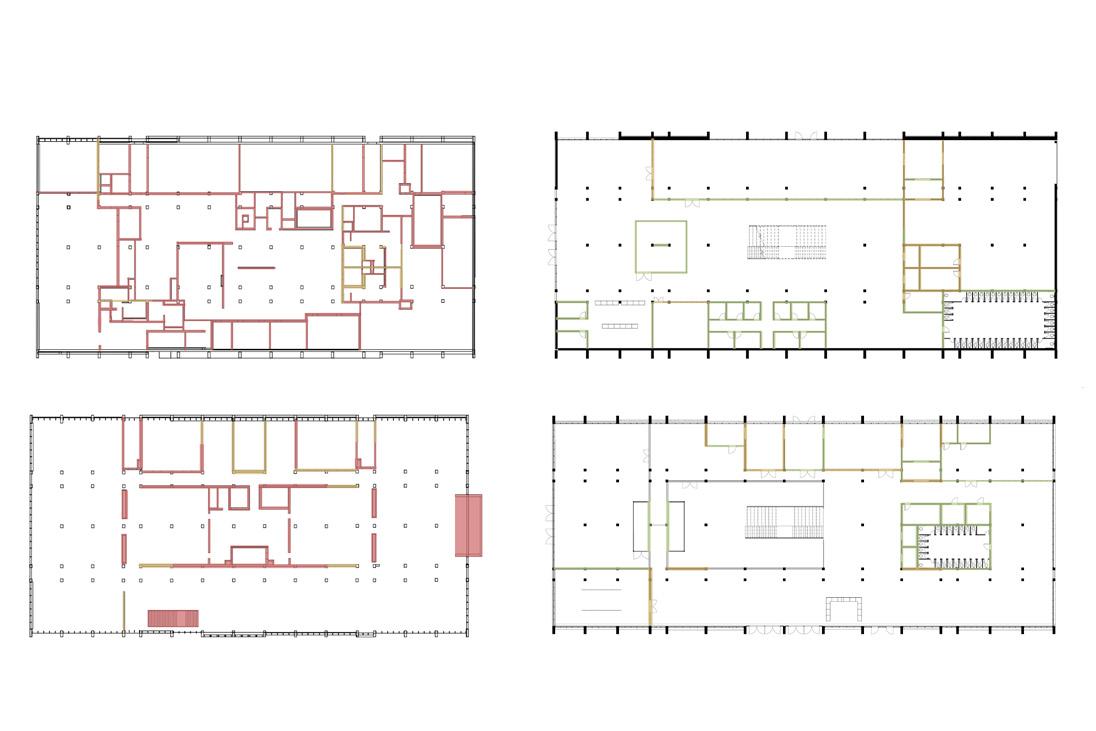

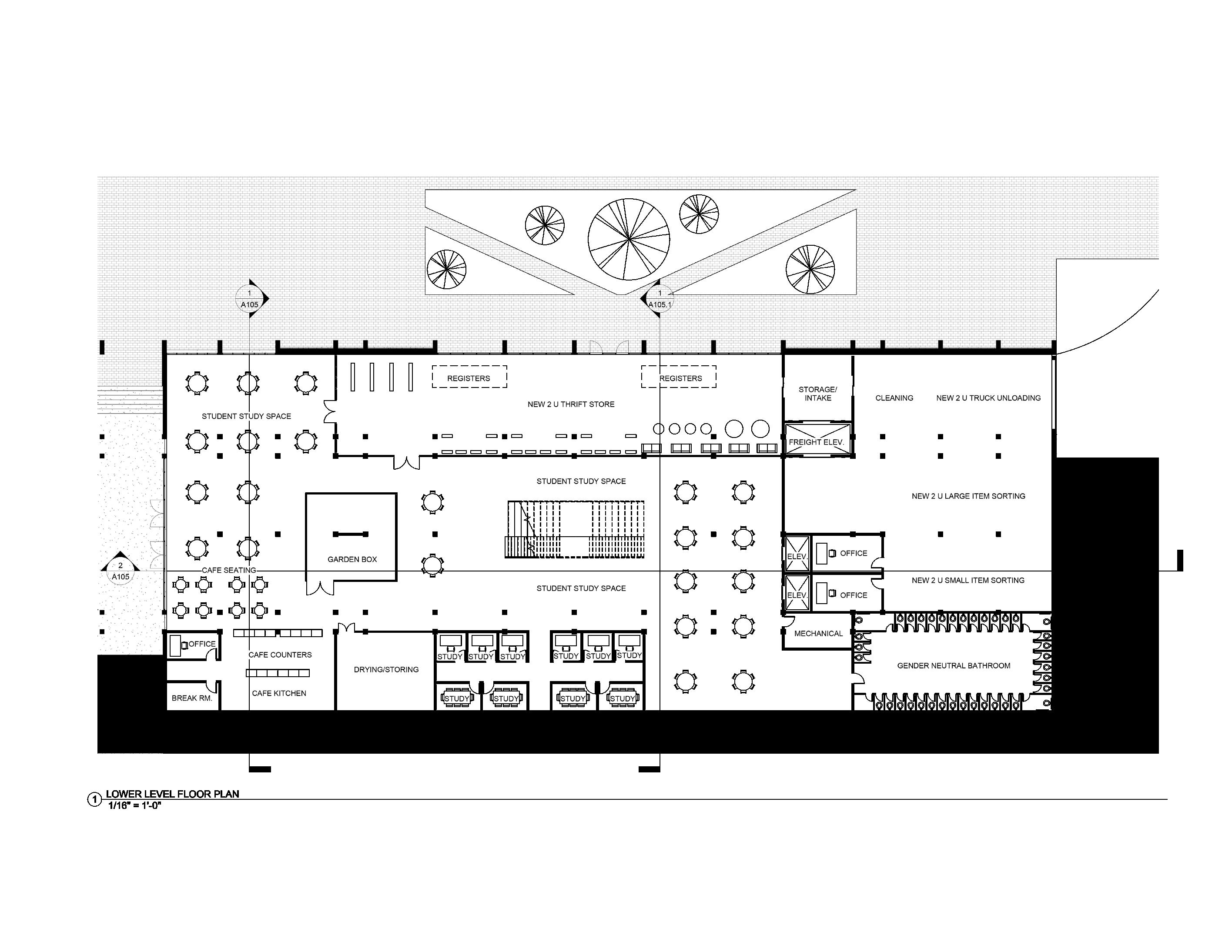


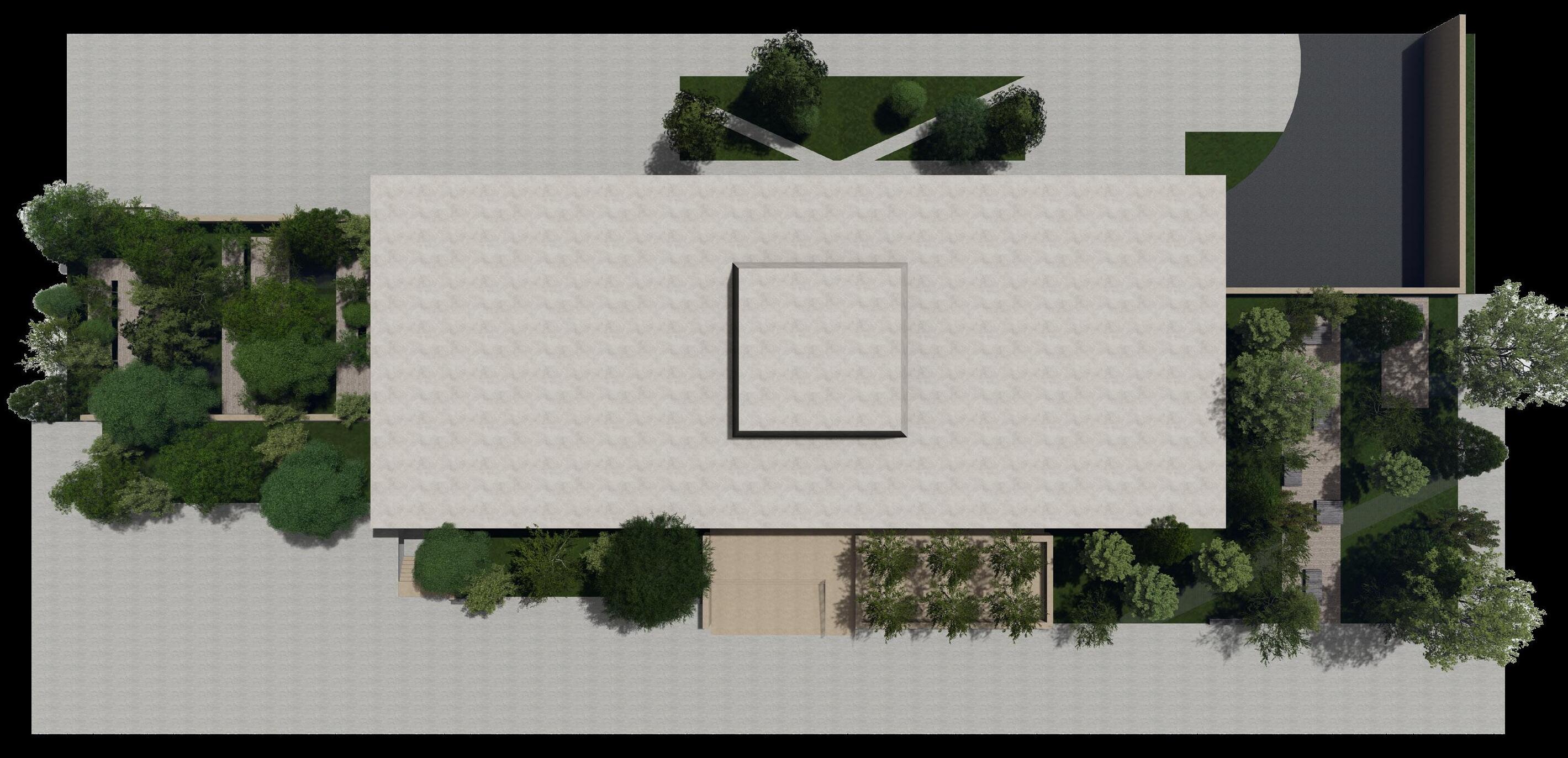
Site Plan
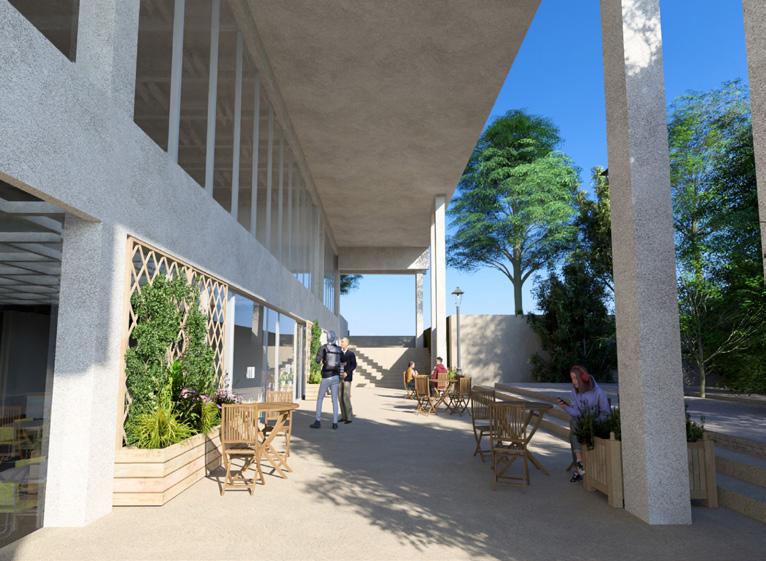


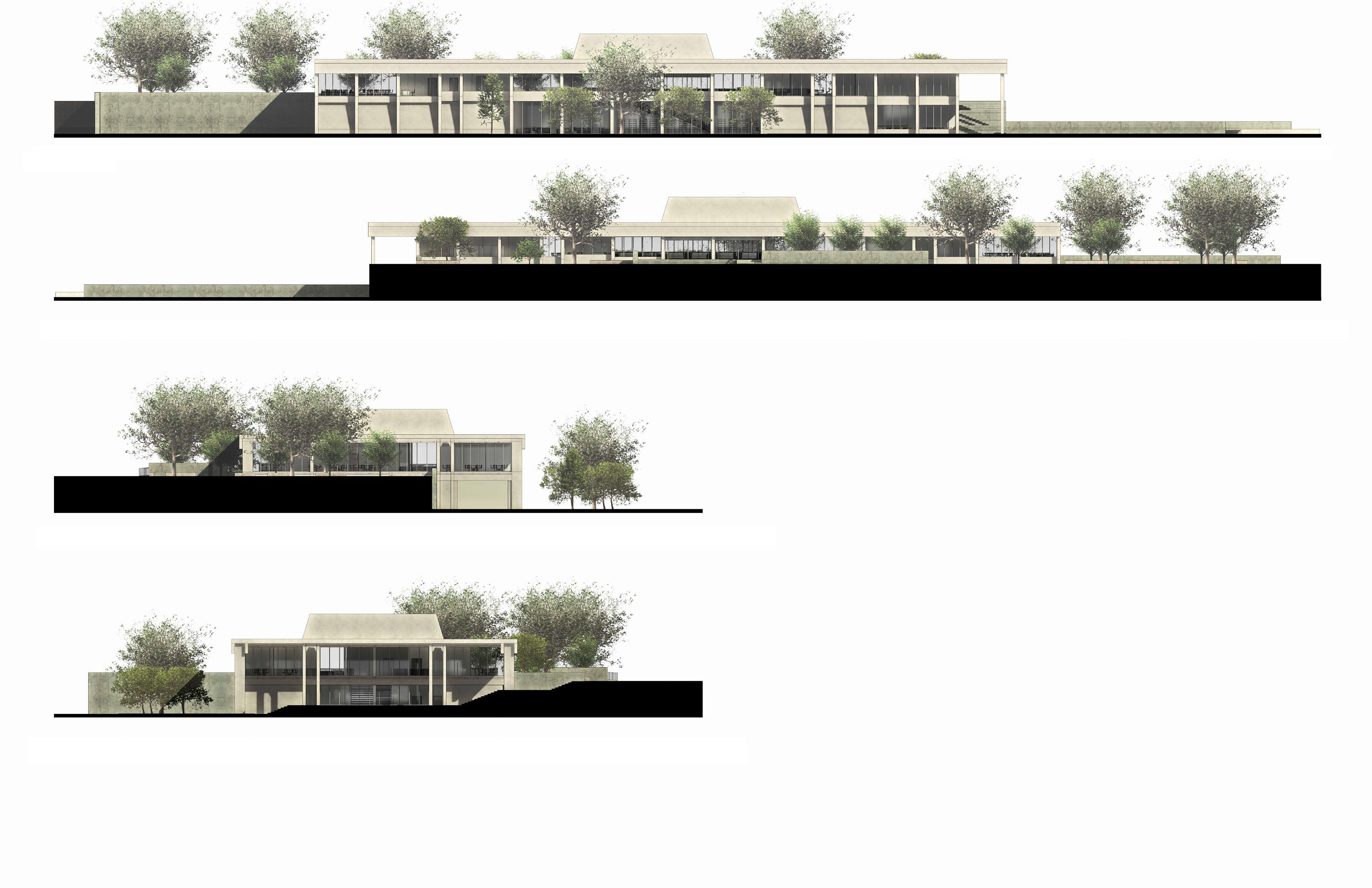



Hadley, Massachusetts
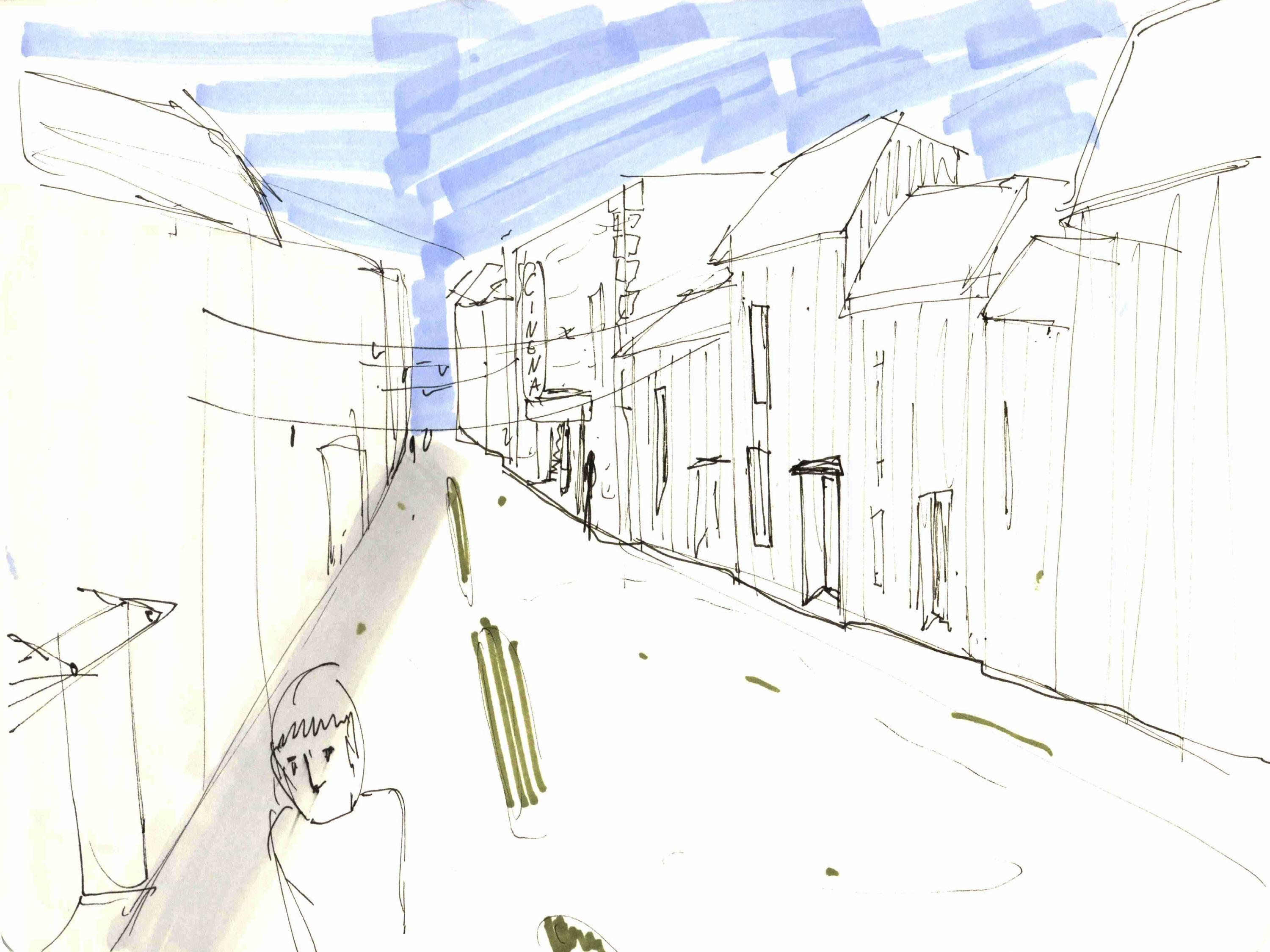
Located in the heart of Hadley, Massachusetts at the Hampshire Mall on Route 9, the first addition to this developing strip includes an affordable apartment building that allows for quiet, comfortable living close by to any amenity you could need.
On the south side of the Hampshire Mall, this 63 unit, 160,000 sqaure foot building features 2 bedroom, 1 bedroom, and studio apartments from 550 to 1,100 square feet, advertised to the large population of young professionals and elderly in the area.
The architectural inspiration for this building comes from the tobacco barns that are located throughout the town of Hadley and are an important factor to the town’s rich agricultural history. Their wooden structure and long, narrow windows are implemeted throughout the facades of this building.
Some amenities that this building offers its residents include garage parking, in unit and on site laundry, a spacious gym with a locker room that has bathrooms and showers, trash services, public office spaces, private balconies, and a large courtyard for community events.
1. LIVING ROOM
KITCHEN
DINING ROOM
BATHROOM
BEDROOM
LAUNDRY
PANTRY/STORAGE
CLOSET
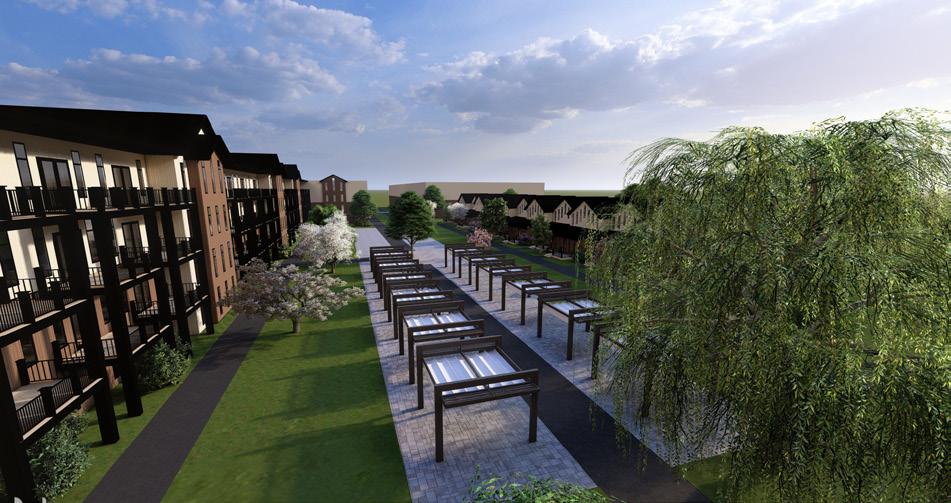

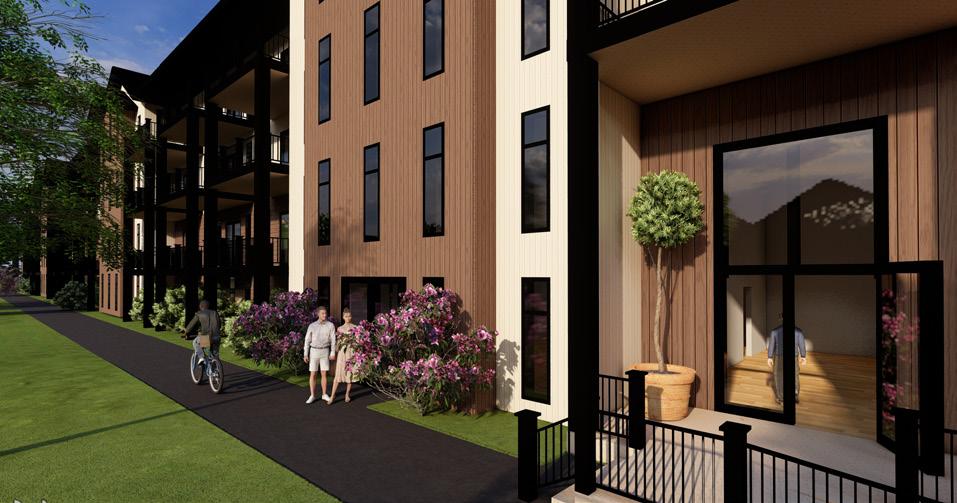
Main Level Plan
Upper Level Plan

The second addition to this growing community is 11 units of townhouses. Following the same tobacco barn inspired style, these 1500 square foot, 3 bedroom, 2 bathroom units are advertised towards families. With in unit laundry, front and back porches, and access to all of the communal events the area has to offer, these townhomes offer all of the comfort and fun that someone would want, while remaining in a prime location.

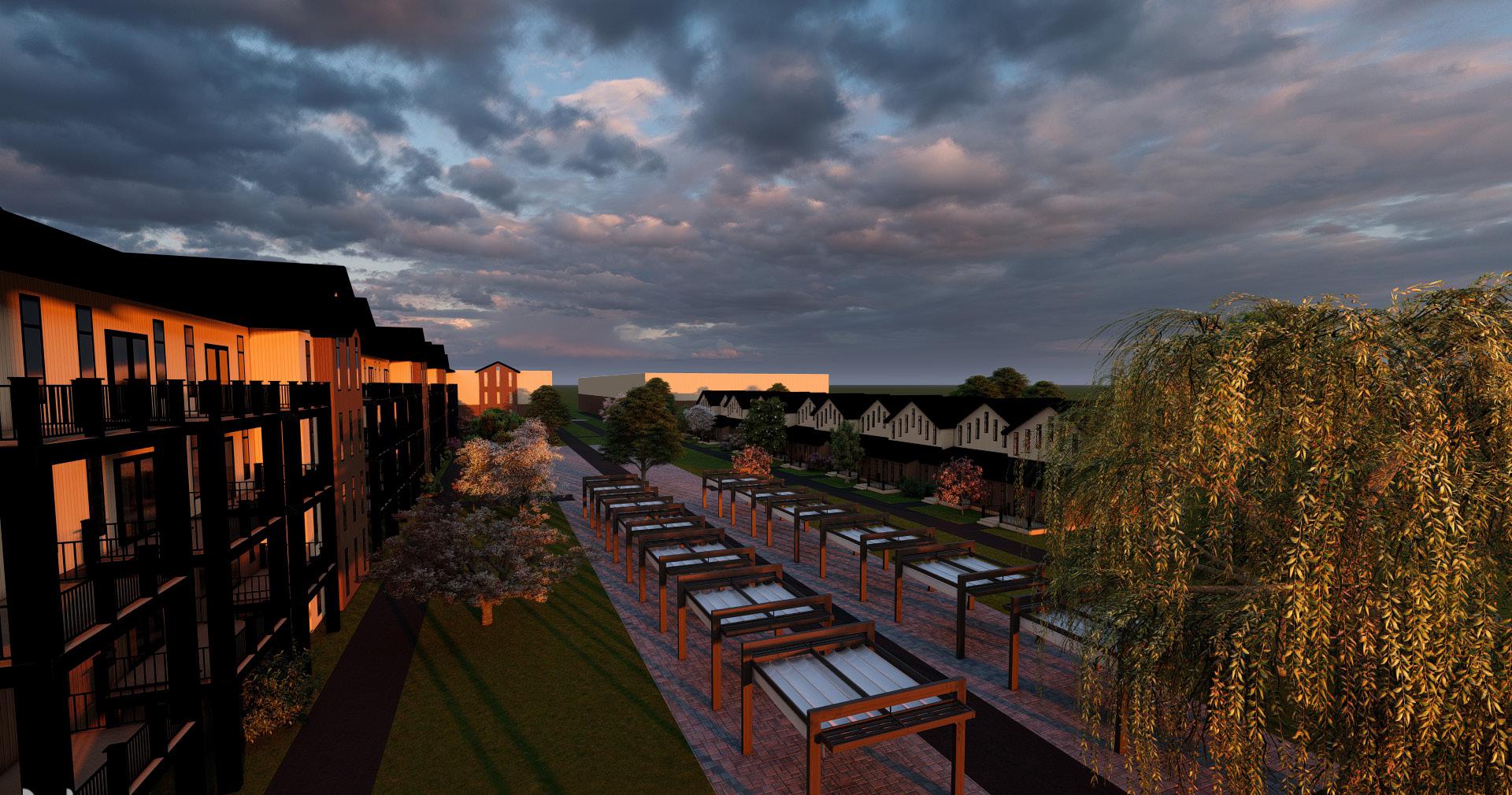

Using Design Integration Using Autodesk Revit 2024, the law office project provides a hands-on introduction to Building Information Modeling (BIM). Over four weeks, readers follow step-by-step tutorials to build a two-story law office while learning essential Revit tools for modeling and documentation. The project not only covers architectural and mechanical systems but also highlights how different disciplines seamlessly integrate. By the end, users gain a solid understanding of Revit’s capabilities and improve their ability to collaborate across various fields in real-world design scenarios.
The final deliverable for this project is a comprehensive set of construction documents, including floor plans, 3D model images, structural plans, elevations, sections, and detailed views. The building was then rendered in Lumion, showcasing its overall form with realistic lighting and materials. These documents effectively demonstrate how different disciplines come together within a single, cohesive project.
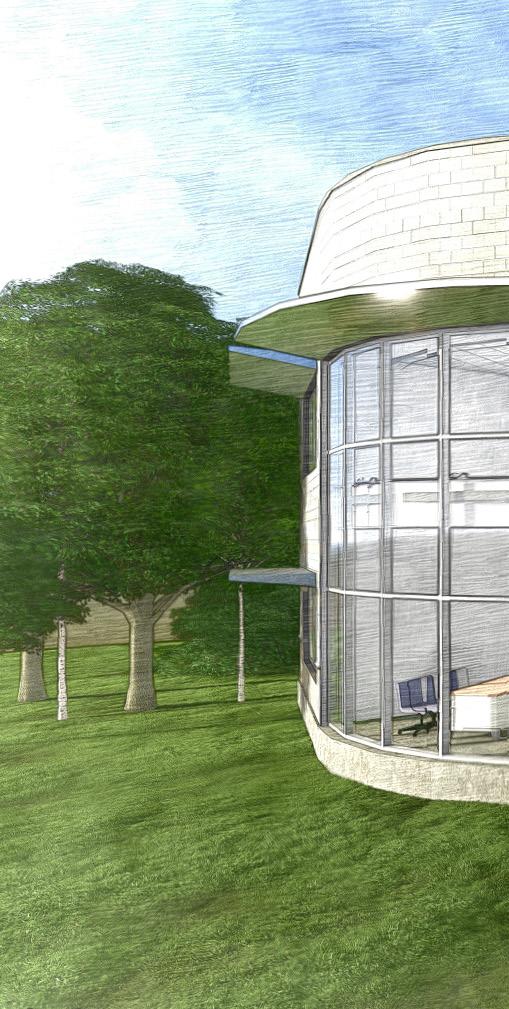
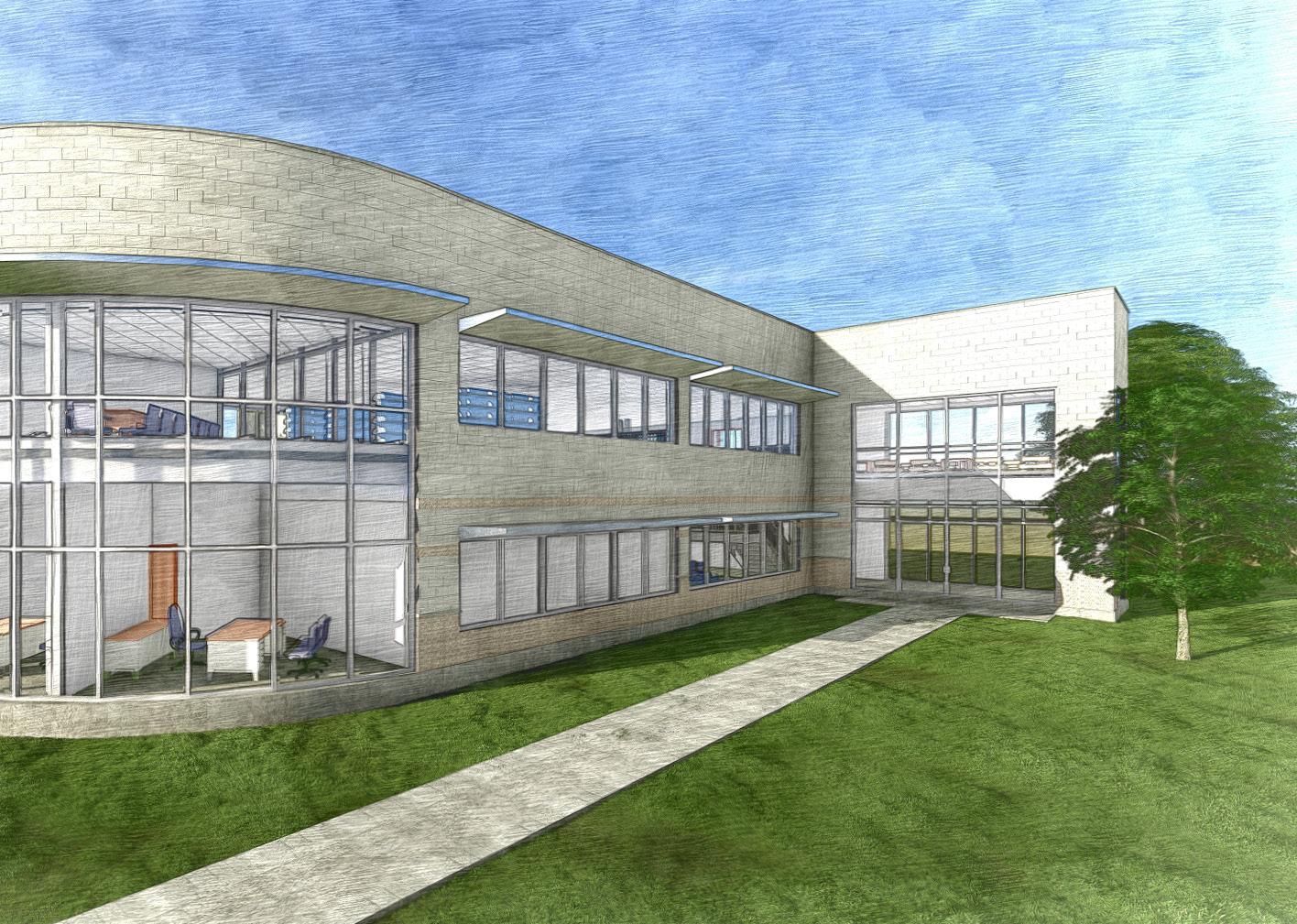
1 2 2.8 3 4 5


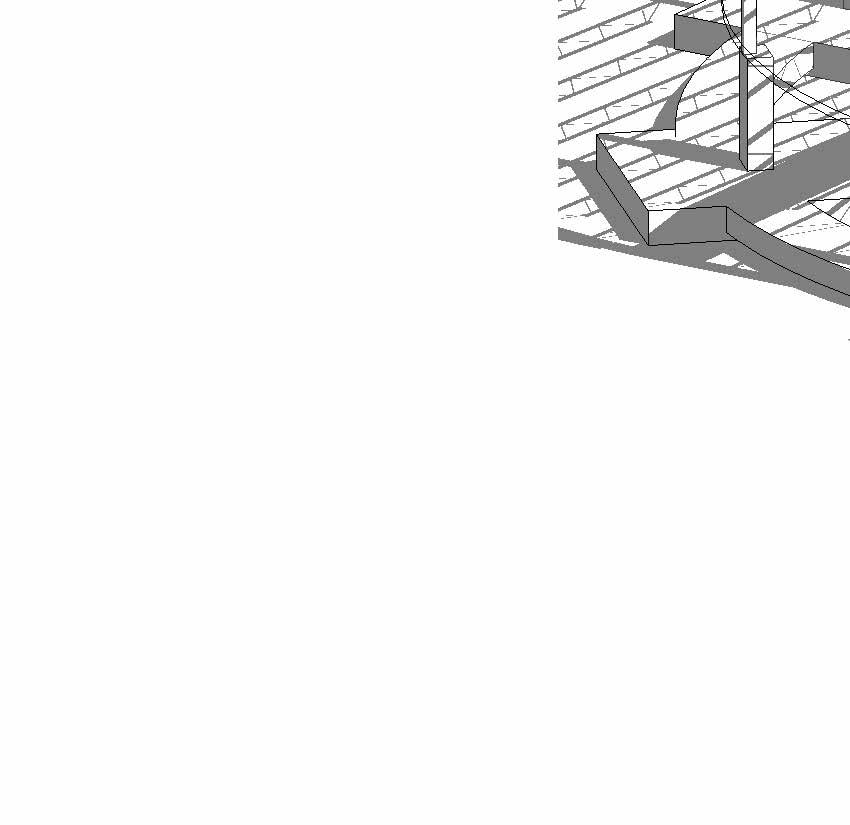






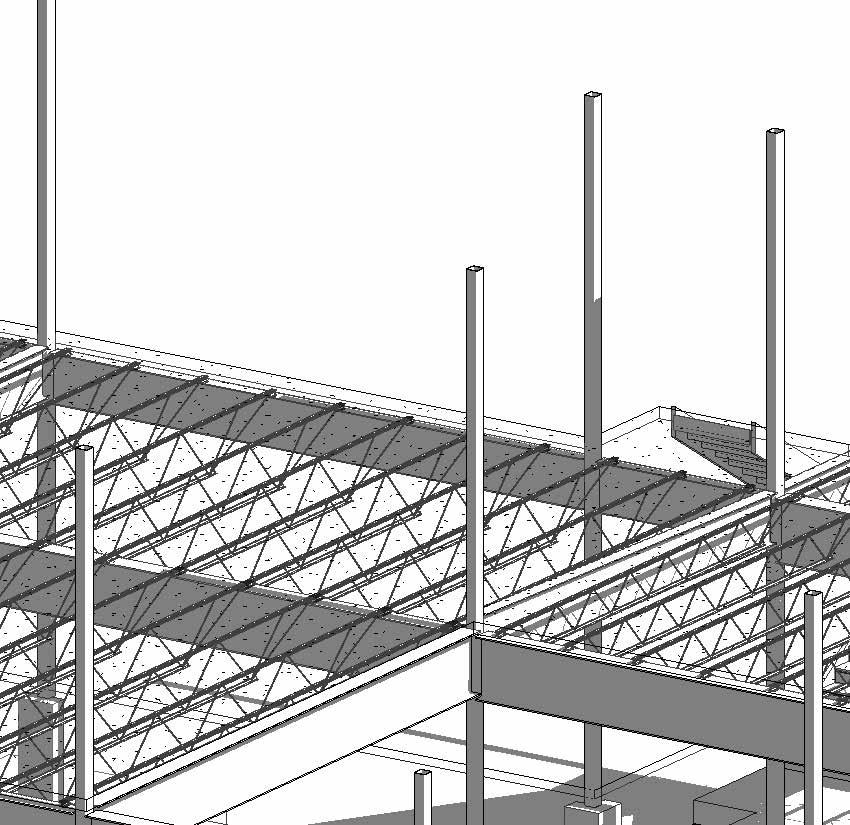

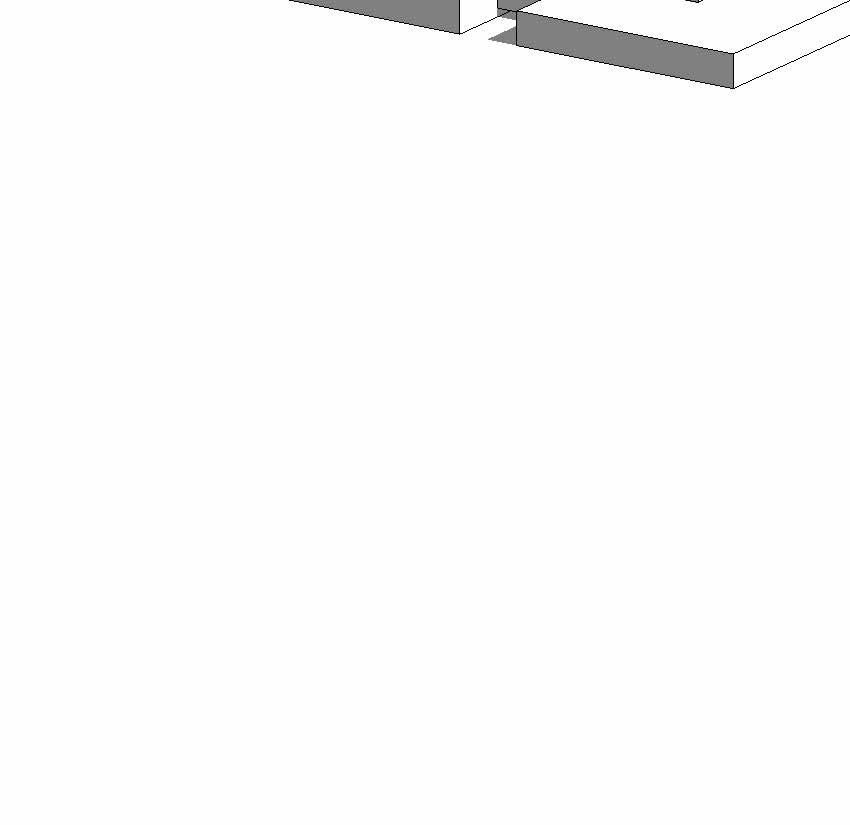


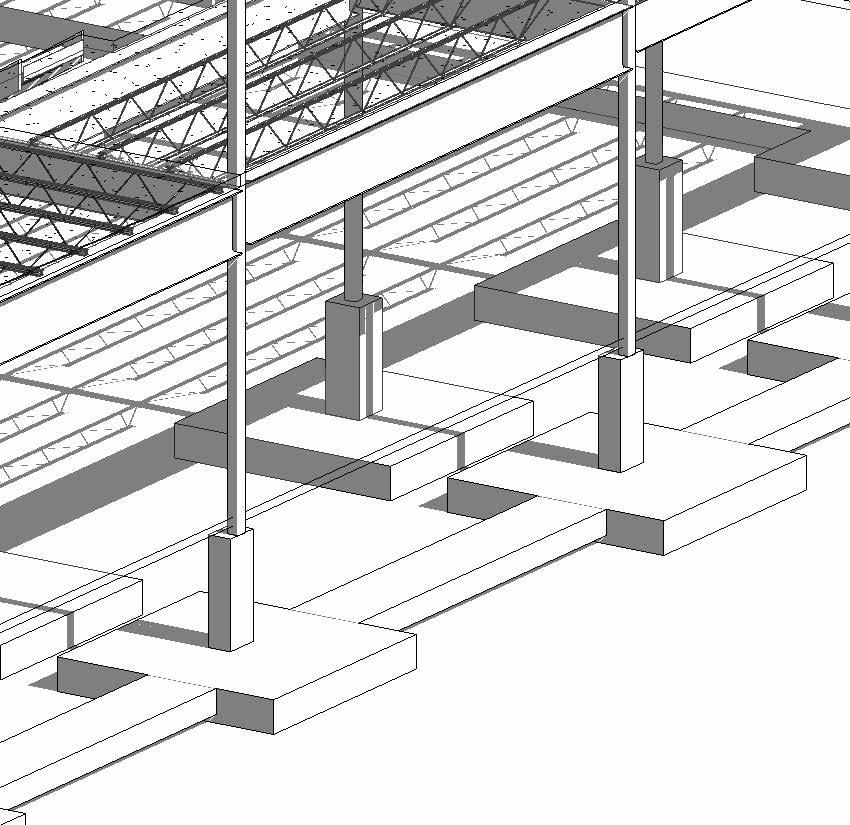



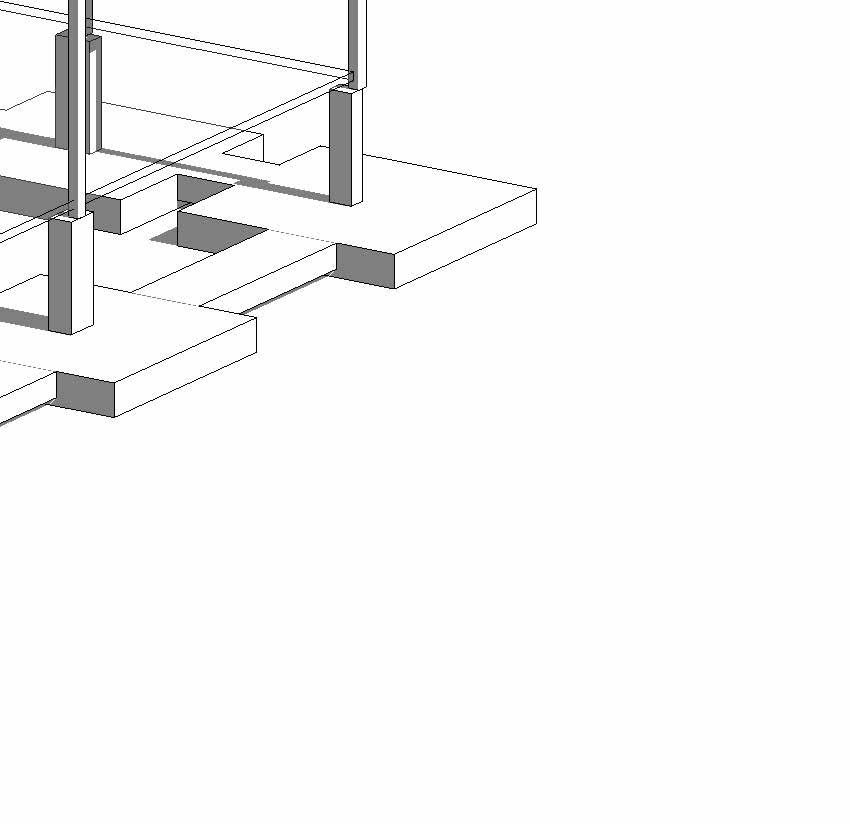


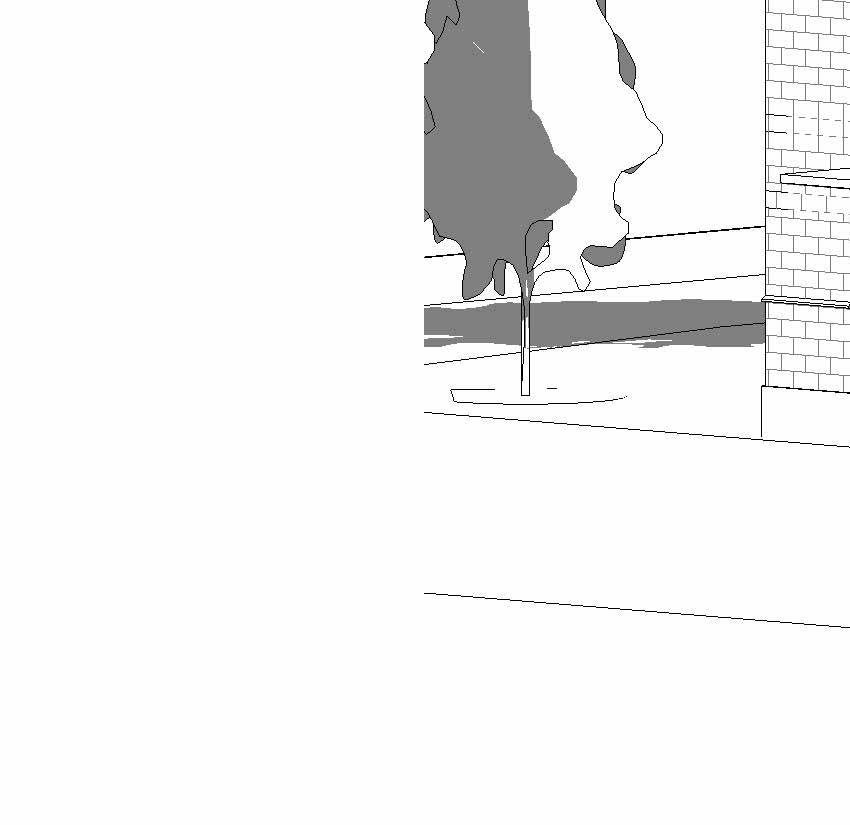

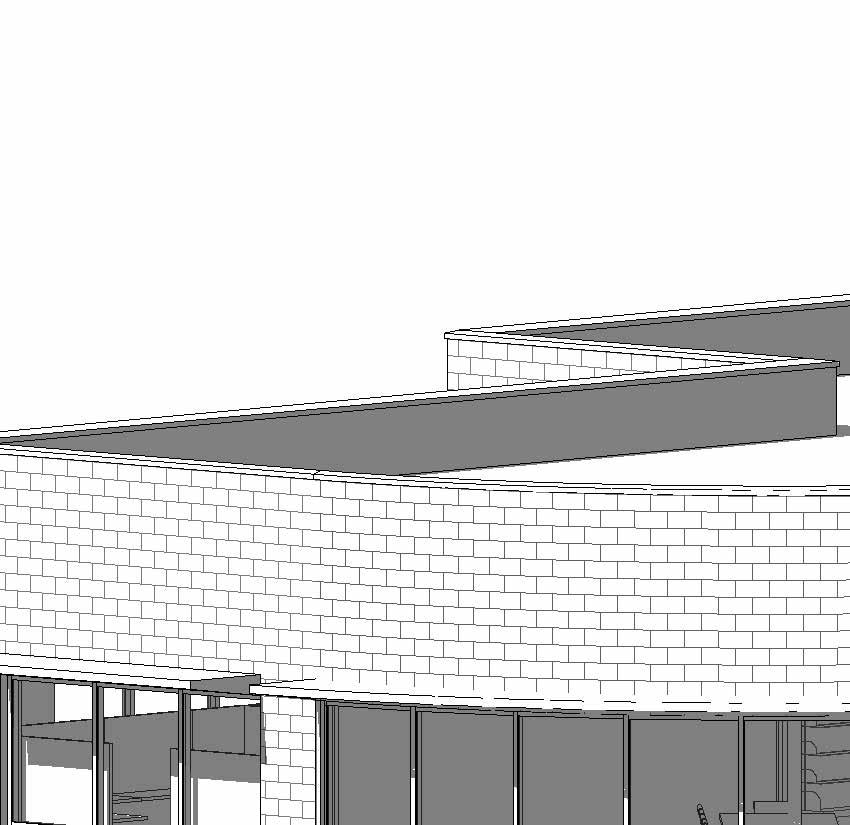





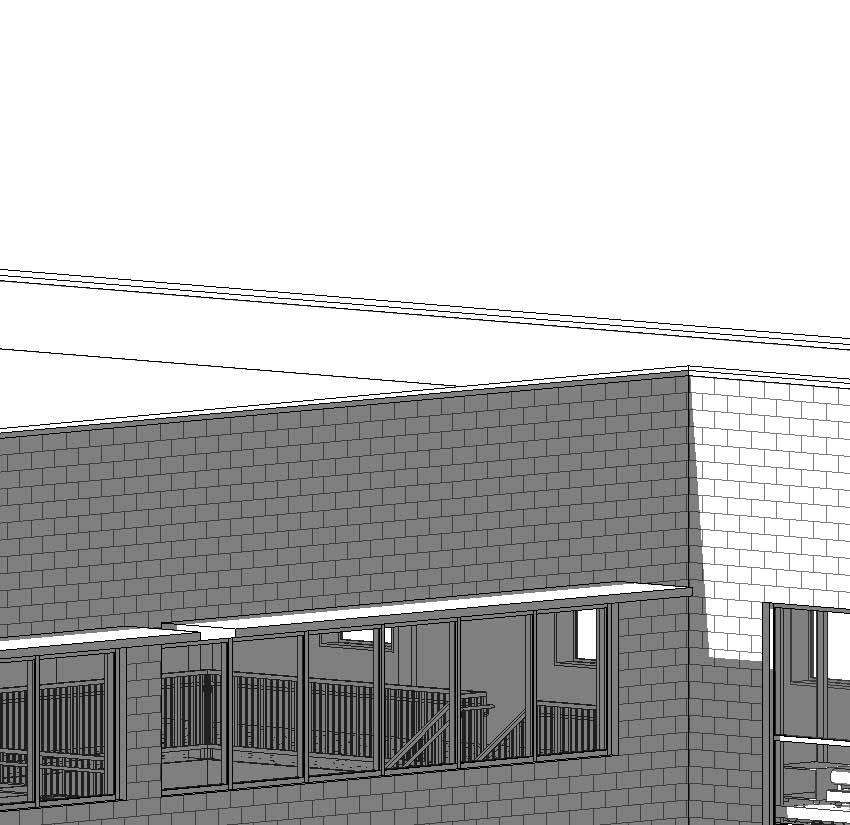



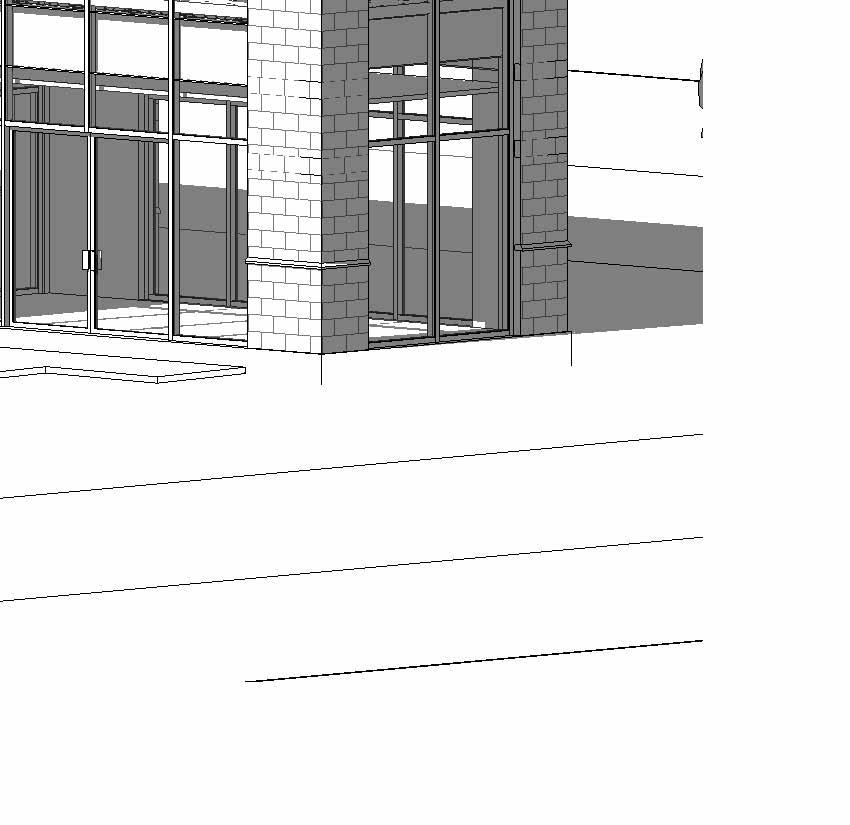

Southwest Residential at the Univeristy of Massachusetts Amherst is a unique community. Housing around 5,700 students, it features a mix of high-rise towers and low-rise residence halls, offering diverse living options. The area is known for its lively atmosphere, with plenty of opportunities for socializing and engaging in campus life. This project focuses on the 5 high-rise towers in the area. Each tower has 22 floors, with 3 full floor common spaces and 19 residential floors that have their own smaller common rooms.
This studio focused specifically on these smaller common rooms. Over the semester, we held and participated in numerous focus groups with Residential Assistants (RAs) and Residential Directors (RDs), in order to gather information about what is working in these lounges and what isn’t. Using this information, we created a series of design ideas that align with the data being given us while also thinking outside of the box and introducing more abstract ideas.
The goal at the end of this studio was to produce a booklet of the data gathered over the semester along with our ideas for what the lounge could be. This booklet was presented to the other staff in the major along with the Chancellor and the Vice Chancellor of the school.

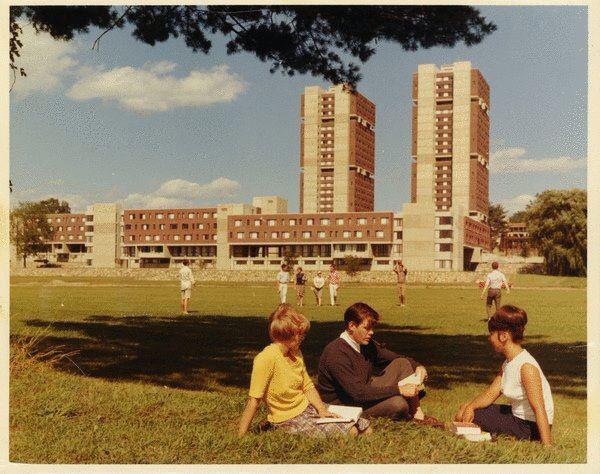
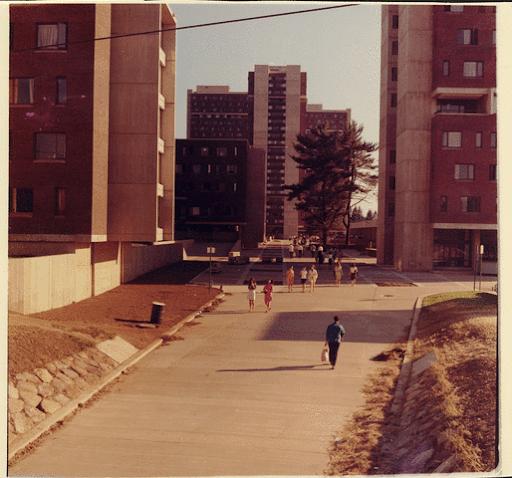


The common room on each floor is a 17’ x 21’ space with 8.5’ ceilings. Two utility boxes are present: one wraps around the perimeter of the ceiling, while the other drops by 1’ and spans the longer dimension of the ceiling. The flooring is carpeted, and the walls are painted in a light shade of blue, resembling powder blue. The furniture is sparse and outdated, consisting of mismatched pieces that detract from the room’s functionality.
On either side of the space near the entrances, there are whiteboards positioned next to each door. The wall adjacent to the doors with windows is non-load bearing. The opposite wall, fully composed of windows, provides natural light, but the room relies on a single artificial light source mounted on the long wall parallel to the windows.




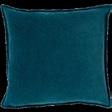
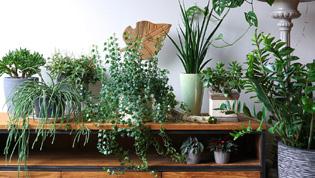

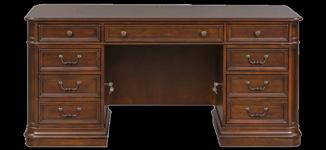
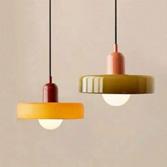
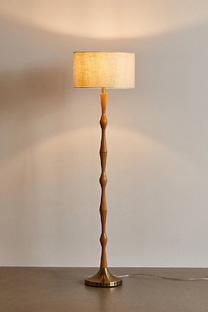


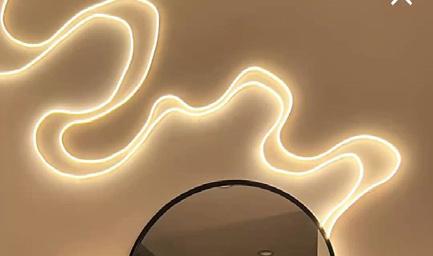
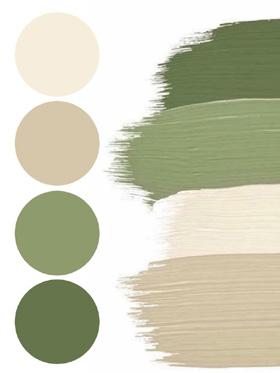








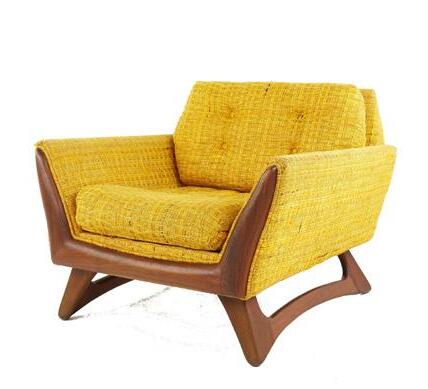
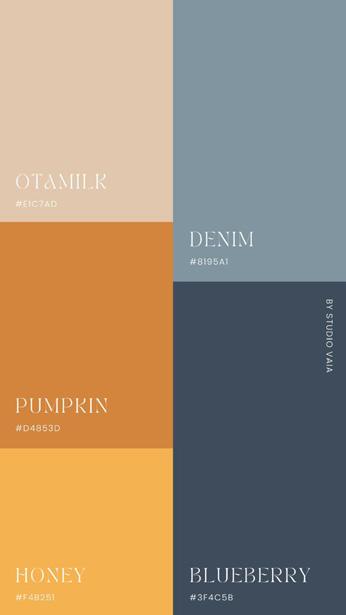
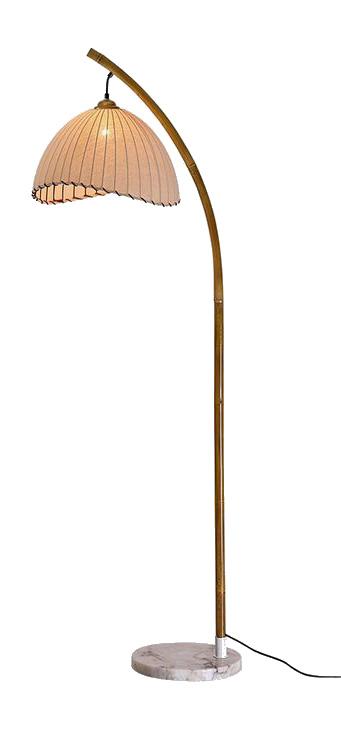
The first step taken for this redesign was to create palettes consisting of furniture and colors to articulate a specific feeling that would be conveyed in the space. Each palette evokes a certain feeling and pushes the user to pursue specific acitivies in each such as studying versus socializing. These palettes acted as a baseline for all of the designs created.





















Color Palette and Vingette 1
Concept: Studious, Vintage Library
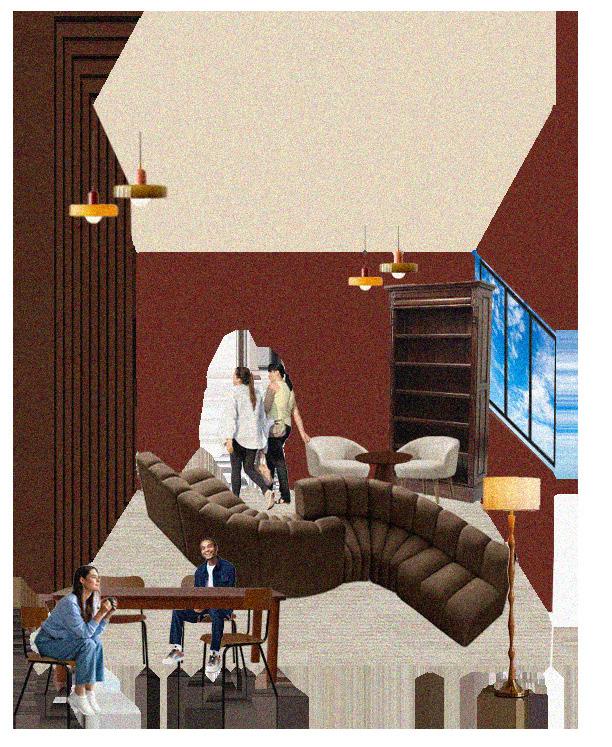




















Color Palette and Vingette 2
Concept: Natural, Earthy





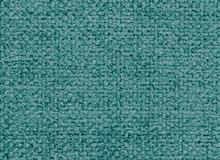




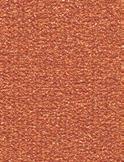











Palette and Vingette 3

The color palettes and vignettes are applied to the space, presented in the form of marker on paper. The choice of marker on paper instead of having full renders was to provide images that were simple and to the point to maximize the understanding among the focus group guests.



What is the Current Atmosphere of the Space?
- “Psych-ward vibe” from the closed quarters and arrangement of furniture
- “Gloomy” feeling due to the dim lighting and color palette.”
- “Feels like a cage” because of the small interior windows
- “Dead” color scheme throughout
How is the Space Currently Used?
- Focused studying during the day
- Group studying
- Working with whiteboards
- Taking phone calls
- Having interviews during the day
- Using telehealth during the day
- Partying during the night
- Playing games during the night
- Taking/giving space to/from roommate
- Adding more comfortable and flexible furniture
- Incorporating resouces like whiteboards and media access into the space
- Maximing natural light and views while improving artificial light
- Making the most of the limited space while creating private spaces like zoom rooms
- Adding warmth and brighter color schemes to the space
- Better visibility into the space from the outside
What if the Dynamic Changed?
What if the Lounges had Different Schemes According to the Floor?
- Some residents would travel for unique programs, like a zoom room
- Would give residents the opportunity to have a greater distance from the distractions in their room
- Could result in the lounges being overtaken by people who do not live on the floor
What if the Lounge Schemes were Divided Between Working and Socializing?
- The size of a space impacts its use more than anything. That is why common floors are for socializing and floor lounges are for working
What if the Portion of the Wall with the Glass and Door was Removed?
- This would exacerbate the noise problem
- There would not be enough privacy

This floor plan was designed to foster an open, public lounge where multiple groups can occupy the space simultaneously while still allowing for personal separation through the use of nooks. Both halves of the roof accommodate group and individual use, ensuring flexibility in how the space is experienced. Circulation remains unobstructed, allowing for seamless movement throughout the lounge without disruption.
The layout is intended to accommodate a range of study and social needs, from single-occupancy nooks to 1–4 person group tables and 1–2 student lounge chairs. Modular and ergonomic furniture enables occupants to rearrange the space as needed—whether creating a more private nook or repositioning a chair for group interaction. Materials within the space establish a calming environment with pops of color that stimulate the mind. The color choices within the nooks aim to create a “carved away” feeling while still maintaining visual integration with the rest of the lounge, achieved through a front-wall color that ties into the other walls.
The acoustic ceiling features evenly distributed LED strip lighting throughout the larger space. Each nook is equipped with its own controllable recessed lighting, complemented by an adjustable workspace light above the desk.
1 Seat Study/ Lounge Whiteboard
4 Seat Study/ Discussion

Frosted glass provies visibility inside space and privacy outside of
Clear path through space
Idea display wall in 1 seat nooks
Adjustable lighting within all nooks
1-4 Seat Booth Study/ Lounge
Can be used individually or as a group
2 Seat Lounge/ Study
(all) Furniture modular and ergonomic
Privacy enhanced seating
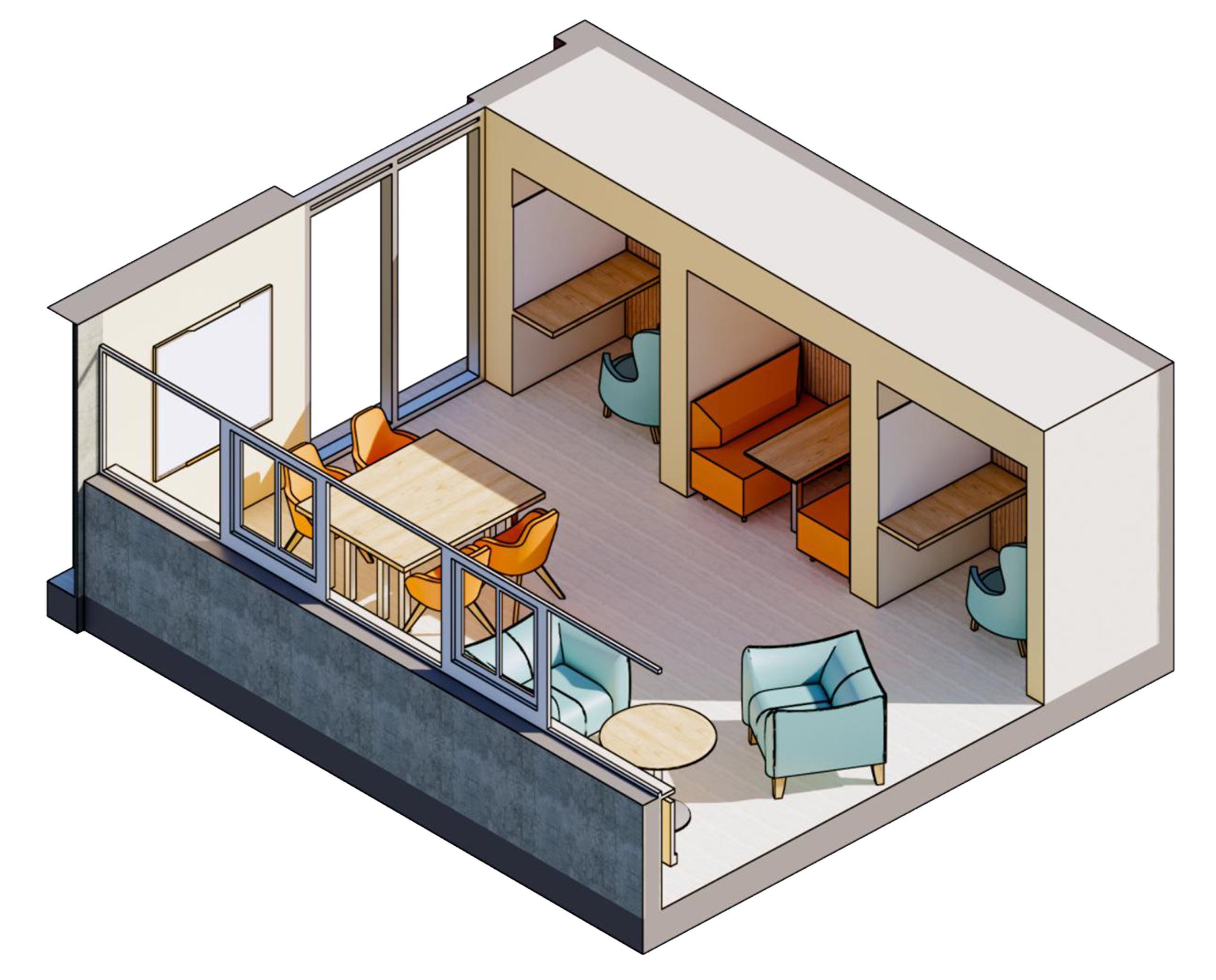
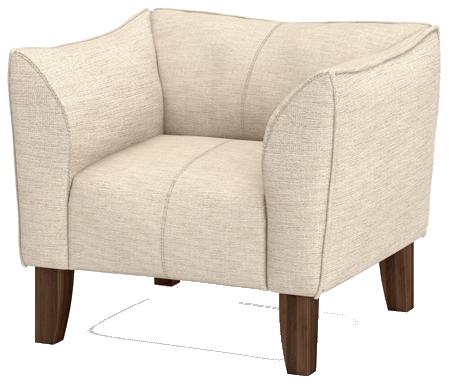

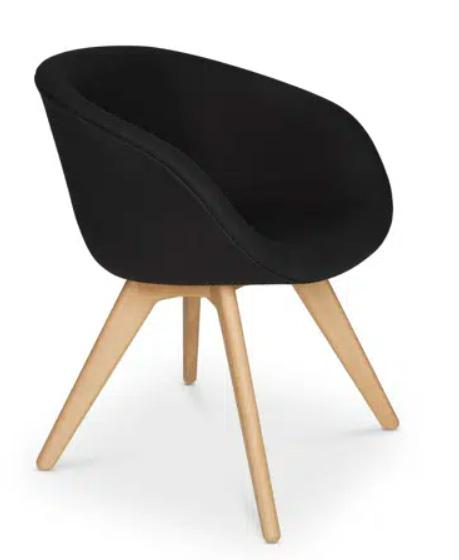



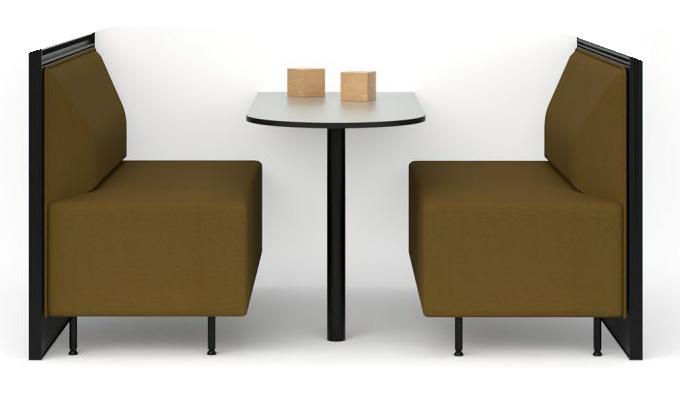

Upholstery 1

Upholstery 2
Architex Tailor Made - Sunset
Tile Depot - Shaw Drift


